



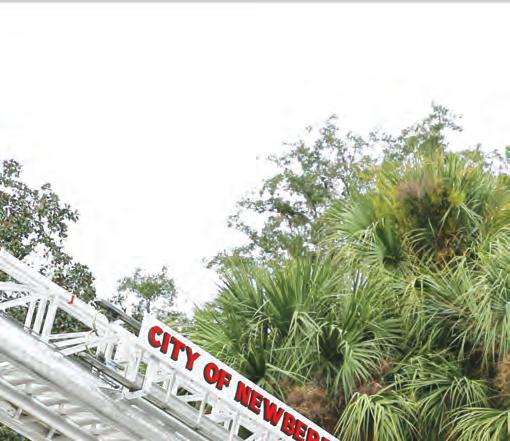





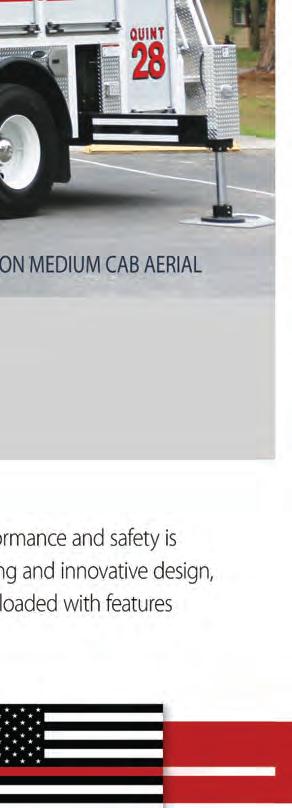













































Florida Fire Service is the monthly publication of the Florida Fire Chiefs’ Association, provided to Florida Fire Chiefs’ Association (FFCA) members, by the Florida Fire Chiefs’ Association.
Florida Fire Chiefs’ Association
221 Pinewood Drive Tallahassee, FL 32303
Phone:(850) 900-5180
Email: info@ffca.org • www.ffca.org
FFCA Staff
Ngoc Huynh- Executive Director
Denise Holley - Office Manager
Greta Hall - Marketing Communications Manager
FFCA Board of Directors
Harold Theus - President
Michael Choate - 1st Vice President
Trip Barrs - 2nd Vice President
Douglas Riley - Immediate Past President
Carlos Aviles - Secretary/Treasurer
Ryan H. Crawford - Northwest Region Director
Brady Rigdon - Northeast Region Director
Michael Johansmeyer - East Central Region Director
Chantal Botting - Southeast Region Director
Ian Kemp - West Central Region Director
Gregory DeWitt - Southwest Region Director
Ngoc Huynh- Executive Director
Leland Greek - Senior Member
Editorial Submissions magazine@ffca.org (850) 900-5180
Advertising
Scott Leisen, Editor in Chief scott@ffca.org (386) 717-0055
Subscription rate for members is $36, which is included in member dues. Archived electronic monthly editions of Florida Fire Service magazine are available at www.ffca.org. Log in as a member and click on the Publications tab.
Florida Fire Service
June 2024, Volume 32, Number 6 USPS # 016-759
Periodical postage paid in Daytona Beach, Florida, and additional post offices.
POSTMASTER: Send address changes to Florida Fire Service, 221 Pinewood Drive Tallahassee, FL 32303. Statements of fact and opinion are the responsibility of the authors alone and do not imply an opinion on the part of the officers or the members of FFCA.
Copyright 2024 by the Florida Fire Chiefs’ Association. All rights reserved. Materials may not be reproduced without written permission.
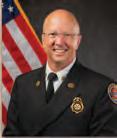



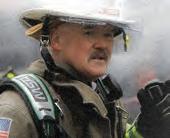
Palm Bay New Hires Complete Orientation
Oviedo FireTrains in Sur face Water Rescues
Station 80 Ribbon Cutting Ceremony
Patient Thanks Fire Department Crews and Medical Team
South
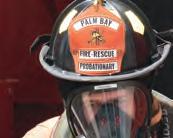

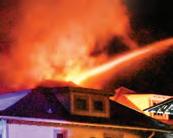
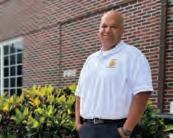
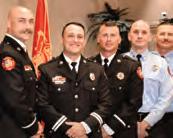

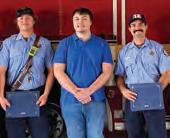
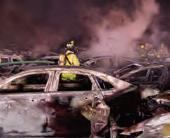
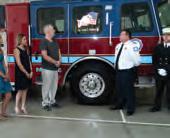

Wearehonoredtohaveearnedthetrustof firstrespondersaroundtheworldasleaders oftheemergencywarningindustry.Wecarry thatresponsibilityearnestly,alwaysstrivingto ensurethattheeverydayheroesservingunder theilluminationandprotectionofWhelen productsareequippedtodotheirjobswith enhancede ciency,reliability,andsafety.



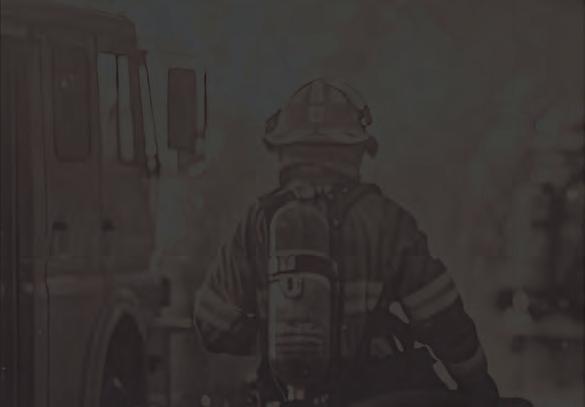
NOMINATIONSFORTHE2024WHELENEVERYDAY CHAMPIONARENOWOPEN!
The Whelen Everyday Champion program honors an individual or group that has shown bravery during an act of exceptionalvalororworkstirelesslyeachdaytomaketheircommunityabetterplacetolive.
The winner will be honored in a special ceremony at the NASCARHallofFameinCharlotte,NC,andwillbefeatured in the Whelen Hall of Champions alongside past winners, including community volunteers, police o cers, firefighters, aparamedicine team, and even a tow truck driver who made a daring rescue while returning from a call.

Scan here to learn more, or nominate your Everyday Champion or visit whelen.com/everydaychampion Nominations close September 6, 2024.
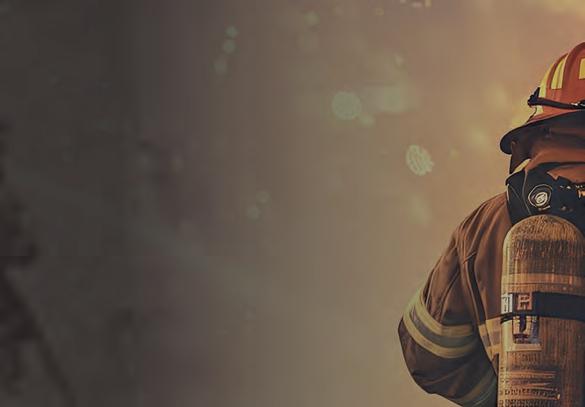

Since 1952, Whelen Engineering has been a proud ally and supporter of our nation’sfirstresponders.Weare driven by our mission to protect those who protect others by providing the high-quality, reliable products and technology needed to aid them in their critical missions. From warning lights to white illumination, sirens, controllers, and software, every product that bears the Whelen name has been thoughtfully designed, manufactured, and tested right here in America to perform at the highest level in any condition.
ManufacturedinAmericaforover70years-weneverleft,andwe’reheretostay.
Hope all is well.
It is hard to believe that my year of presidency with the Florida Fire Chiefs’ Association is coming to an end. It has been an incredible honor and privilege to serve you all. In my acceptance speech, I envisioned this year as one of rebuilding and restoring. We know that building a house requires a strong foundation, and that was the board’s focus this year.
Shortly after taking office in July, I spent a week in Tallahassee evaluating the administrative and financial aspects of the association. With two employees having recently retired, only Interim Executive Director Ngoc Huynh and Denise Holley were left to manage the membership, vendors, and conferences. Concerned about the sustainability of our operations, we explored several options, including discussions with other associations and meeting with a management firm to consider outsourcing all the association’s work to a third-party
The board and I had several priorities, with none being more important than filling the Executive Director position. In January, the board voted unanimously to hire Ngoc Huynh for this vital role. Her creativity, organizational skills, and determination have been key in restoring and rebuilding our association.
Our board has taken a conservative approach to managing the association’s revenues and
expenses. We exhausted all efforts in our attempts to litigate against the financial institution where the breach occurred, implemented software applications and integrations to introduce automation and increase financial security measures, changed financial institutions for all our accounts, and transitioning accounting responsibilities to another firm that specializes in nonprofits.
I am most proud of the success experienced at the inaugural Florida Fire Conference. With two full-time employees, a cadre of volunteers, and the assistance of Orange County Fire Rescue, a long-awaited change in venue and a revitalization of our winter conference was successfully achieved. With a great lineup of speakers and H.O.T. classes, we hosted over 2,800 registered attendees and sold out the exhibitor tradeshow.Wewill build upon this success with lessons learned from our first year in Orlando. I believe that, in short order, this will be the preeminent conference in the southeastern United States.
Legislatively, we were successful in advocating sound legislation that protects our firefighters and defending against harmful legislation. Through partnerships and relationship building, we were able to be part of the passage of House Bill 463 (2024): Lights Displayed on Fire Department Vehicles, which gives fire departments in the state of Florida the option
Harold Theus, Fire Chief FFCA President

of adding blue lights on apparatuses of a specific weight to help prevent roadside accidents when firefighters respond on-scene. Our influence in Tallahassee is strong, and this year, we returned to Washington, D.C., for the first time in 4 years, to ensure the Florida Fire Service has a seat at the table on a national legislative level. While there, we did our part in meeting with our legislators to campaign for votes to save the Assistance to Firefighters Grant (AFG; commonly known as the “FIRE Grant”) program and the Staffing for Adequate Fire and Emergency Response (SAFER) grant program set to expire in September of this year, which as of this writing has successfully passed the U.S. Senate by 88-2 and is due to arrive to the President to sign.
Iwould like to thank our board members for their dedication, the men and women of Alachua County Fire Rescue for taking on additional responsibilities, and County Manager Michele Lieberman for her understanding of my absences. Finally,Iwould like to thank you, the membership of this association, for your confidence and trust in my leadership this year and for supporting and standing by our association during some of our most challenging times.
I am hopeful that this year, we have at least poured the foundational concrete for the next phase of this great association.


Acouple of weeks ago, we were over at some friend’s house with several other couples, when a funny, but later awkward conversation started. We were joking about some popular conspiracy theories during this conversation. Then someone made a joke about the earth being flat. Everyone but one lady laughed, and she made the comment, “what makes you think the earth is not flat.” I just kind of shrugged it off and thought she was trying to get under someone’s skin. But she asked again, “what makes you think the earth is not flat?” I could tell she was being serious and as much as I hate arguing with my wife, the last thing I wanted to do was get into an argument with a woman who was not my wife. I chose the high road and did the right thing and got up and went to the restroom. While I was in the restroom, I could hear the conversation getting louder Fast forward about 30 minutes and it was apparent that this lady truly believed in her heart that the earth was flat. We have known her and her family for over 25 years and our kids grew up with their kids and we were active in church together during this time. I didn’t know what to think. At one point, I began to think about it and maybe it was true. She seemed to have a semi sound argument, but most conspiracy theorists usually do. She lost me when she started with the phrase, ‘the government doesn’t want you to know but…’ My initial response was to call her a nutjob and move on. I even thought to myself that they were good friends and I’m sorry to see this friendship end.
But WWJD stopped me in my tracks. What Would Jesus Do? First, I don’t think he would

By Rick Spence
have criticized her or made fun of her. Jesus definitely would not have called her a nutjob. I thought about Jesus’ life as it was told by His disciples in the Bible. He didn’t always agree with the people He met. He didn’t always change their life, save them, or heal them. He didn’t ostracize them or exclude them from being around Him. He always treated them with respect and above all, He showed love toward them. He treated them just like He treated each one of His disciples. He offered them compassion, empathy, and friendship.
I have many friends who do not share the same belief in Christ that I do. Do I criticize them or make fun of them? Do I exclude them from activities I am involved in? Do I argue with them and try to convince them to change their mind? No, to all the above. Why then would I treat someone I know so well and is that close to our family? Perhaps, since I thought that we went to a lot of the same events and were involved in similar activities and had been involved in the same church together for all these years, we had to have the same views and opinions. We had to have the same opinions on everything. Right?? I really don’t know why it made me bristle so much when I found out she really thought the world was flat. What if she said she was voting for someone different than me? Or had a different opinion about some of the current world events? Oh my gosh, what if she pulled for a different college football team than me? I know, now I’m starting to meddle and get personal. How did Jesus handle these situations? He loved them just the same as He did everyone else,
including His closest followers. If we truly believe in what Jesus did for us, like changing our lives and someone who we considered as the author of our faith, shouldn’t we try to live like Him and treat people like He did? The only people Jesus was ever critical of were the Pharisees, the religious leaders of the time. He criticized them because of their hypocrisy, saying one thing and then acting totally different. It made me think that I was probably acting like a Pharisee and Jesus would have been critical of me. That was not something I wanted. It took a couple of weeks, but I was able to put this behind me and we recently had dinner with this couple again. No one brought up the flat earth issue and we had a good time with them. I would like to think I have fully moved on from this, but still in the back of my mind, I think (to myself and not out loud), hasn’t she seen the pictures? But that is not my battle to fight. As my wife often says, “move on Rick.” I’m still a work in progress and I’m trying.
Rick Spence retired as Assistant Chief from the Reedy Creek Fire Department after 30 years. Heis currently the Chaplain for the Florida Fire Chiefs’ Association, Central Florida Fire Chiefs’ Association,Reedy Creek Fire Department, Lake County FireDepartment, Clermont Fire Department, Maitland Fire Department, and the Florida Professional Firefighters. He serves as Sergeant of Arms for the Florida Professional Firefighters and International Association of Firefighters.He was selected Florida Professional Firefighter of the Year in 2018.He has been married to his wife Alecia for over 30 years.





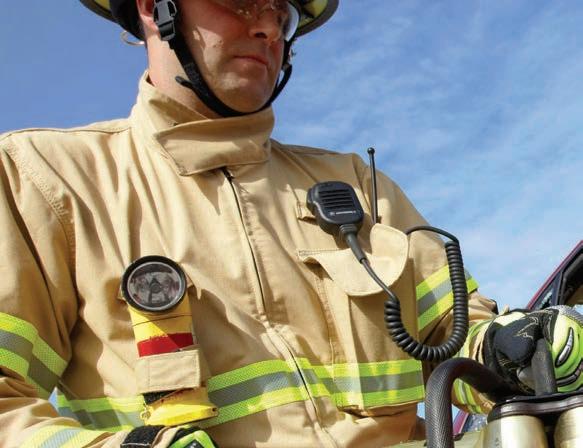


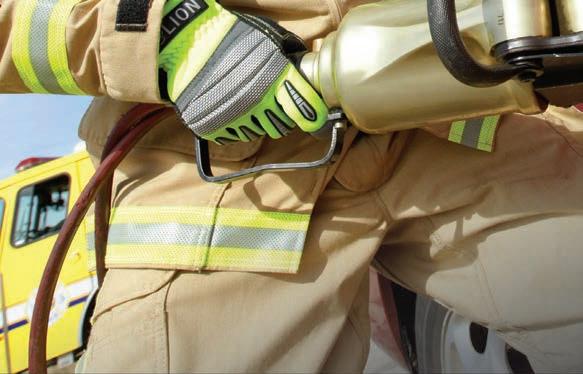


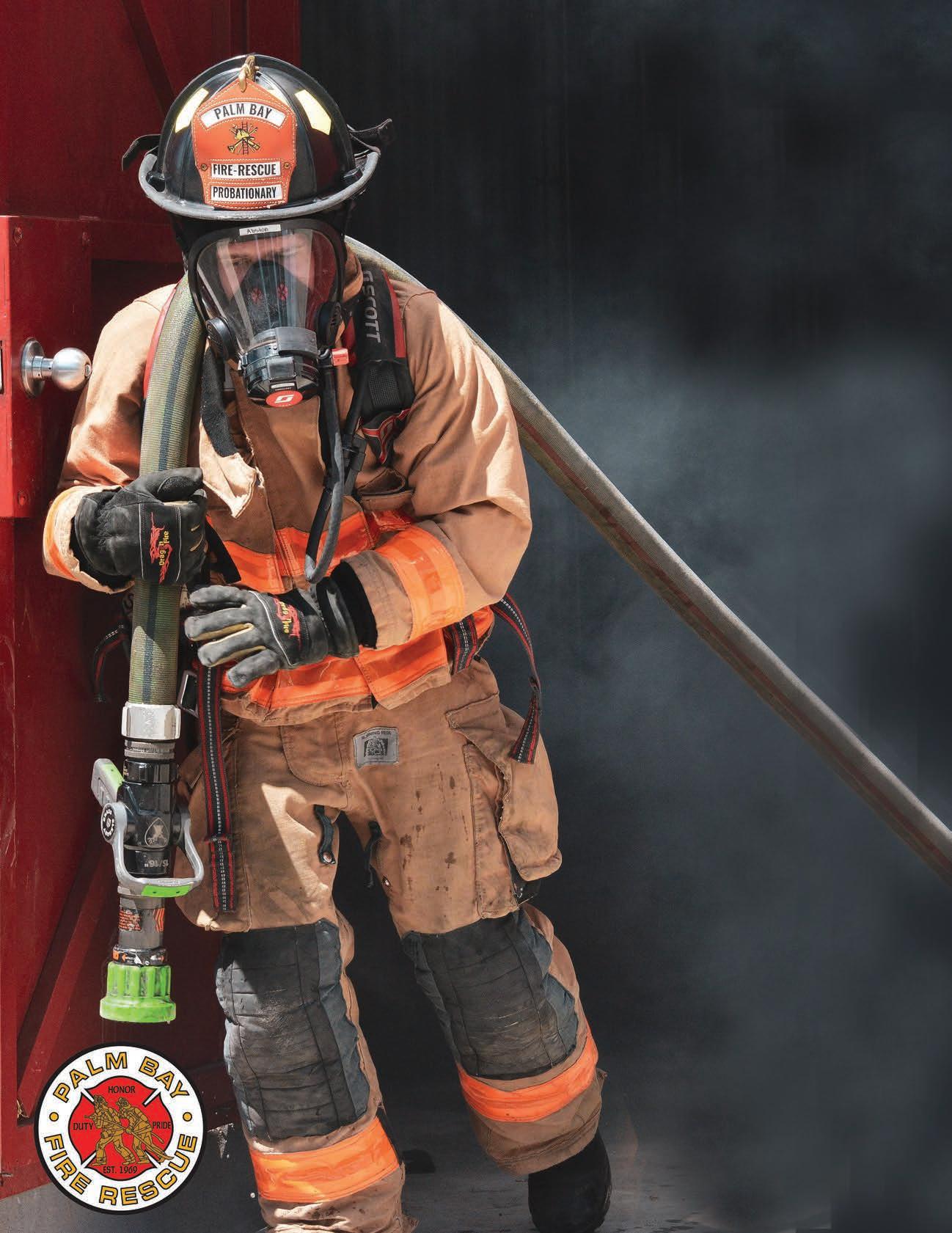
By John Ringleb, Assistant Fire Chief, PIO, Palm Bay Fire Rescue
On Friday, June 14, Palm Bay Fire Rescue completed the eight-week orientation phase for our latest new hire class. The 12 firefighters were brought on board to address current staffing needs and prepare for future station expansion. Despite facing intense Florida heat and severe drought conditions, they remained dedicated to their training.
Collectively, the group invested over 300 hours in guided sessions, completed 12 hours of physical training in full gear, participated in 20 live-fire drills, spent 147 hours on air, deployed nearly nine miles of hose, executed 5900 feet of ladder raises/extensions, and successfully forced open 396 doors. The establishment of our new standalone training division significantly contributed to the success of this new hire cohort. With shift assignments in place, they are poised to advance their careers in the fire service.
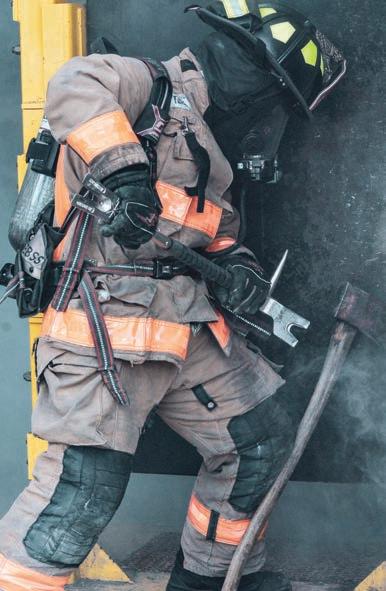
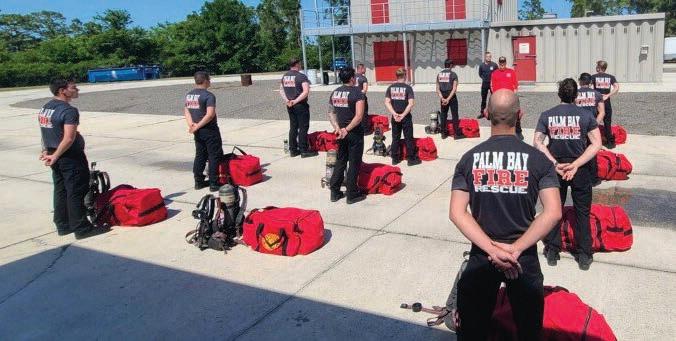
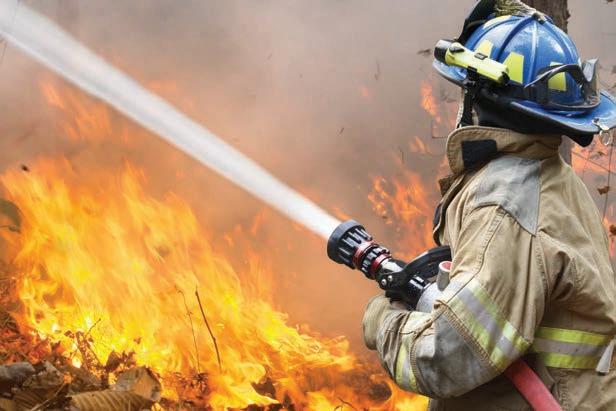
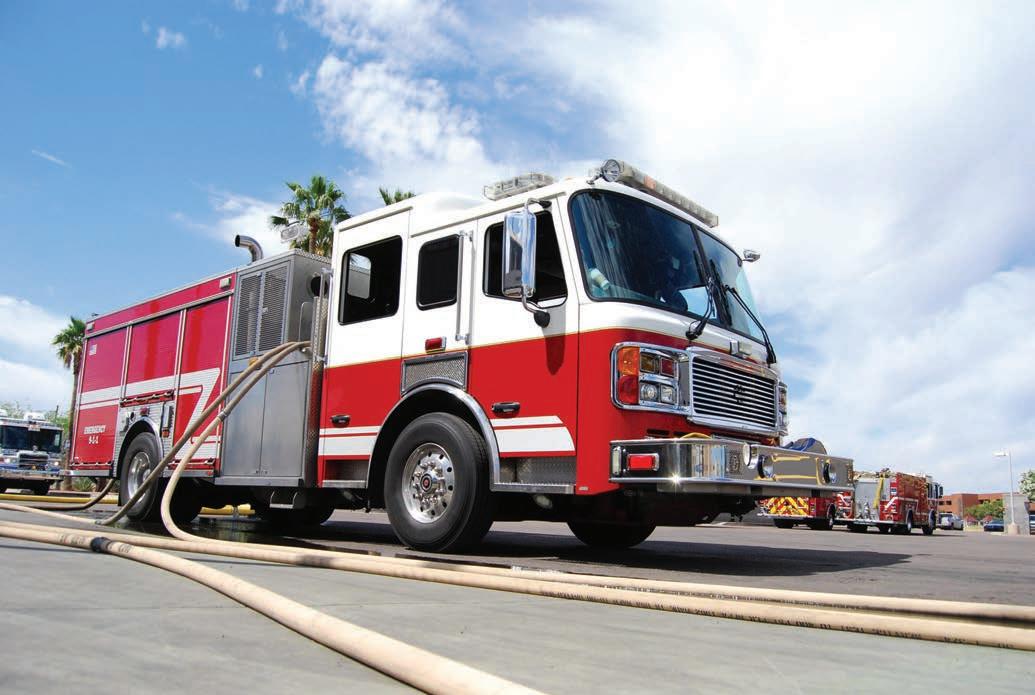
Abilitytoaddcivilianpersonnel
AbilitytoexpandtypesofLineofDutycancerscovered(beyond thestatutory21cancerssetforthins.112.1816FloridaStatutes)
AllowsemploymentwithmultipleFloridafireserviceorganizationsto meetfiveyear,full-timefirefightercontinuousservicerequirement

By Trip Barrs
When in a new place, having a map is always recommended. This might be Waze, Google Maps, Map Quest or for those who have been around for a while, a paper map. We regularly use these tools when responding to emergency calls to ensure we get to the right destination without delays, detours or wrong turns. So why do so many fire departments try to lead their agencies without a map or a plan to guide their people? Is it the sole responsibility of the fire chief to know where the agency is going, exclusive to only those that work at headquarters on a Monday – Friday work schedule?
Many agencies have created strategic plans to keep themselves on track toward meeting their stated goals and objectives, but not all are able to effectively follow these roadmaps for the future. Hopefully your department has a strategic plan that was created with input from all stakeholders and is regularly updated. This document should be familiar to all within the department and serve as a blueprint on what goals are to be achieved and a map to guide decision making at all levels. Having that plan will reduce any detours, delays or wrong turns along the way One of the most common ways that organizations get sidetracked from their core objectives is in implementation of the strategic plan at the middle management level.
As a one, two or three bugle officer, you have the opportunity to help re-focus your department when it seems to be moving off course from reaching its goals. Company officers and shift commanders/battalion chiefs generally have the most recent experience at the street level and can see the implications of changing conditions that have an impact on your ability to deploy the plan. You should also be willing to tactfully address

decisions made at headquarters that make it harder to implement the strategic plan at the operations level. As a fire officer, it is your responsibility to make the fire chief and their leadership team aware of these situations.
No fire chief would purposely write a policy that creates difficulty in reaching the goals of the strategic plan, but they may inadvertently make it more difficult with a policy that does not translate well at the street level. As shift officers, this is a great opportunity to “lead up” within your organization. There are many positive actions that you can take to help your leadership team see what they need to know to guide their decisions.
When leading up, it is important to remember the difference between leading and managing. Managing is developing procedures and then implementing them in the form of processes that accomplish policy Leading is more abstract in that it is the art of influencing others in a positive way. As an example, rule violations can be managed through application of a discipline policy, but leading an employee to change unwanted behavior requires getting them to want to make the change that reinforces the correct behavior. Obviously, a shift officer does not have the ability to discipline the fire chief, so leading up is your best option to exert positive influence up the chain of command. If you already know how to lead down, leading up in your organization is not that much different. The best fire officers I’ve worked with seemed to know when to lead and when to manage. They figured out that it is best to manage processes and systems, but when it came to people, it was leadership, not management, that was required.
Good leaders call for suggestions from their subordinates, asking them to punch holes in a plan so that together they can anticipate gaps and address them before implementation. John Maxwell refers to this style of leadership in his famed book, The 360 DegreeLeader. Leadership traits that promote this type of behavior include good communications skills, interpersonal skills and humility. When approaching a leader with the intent to lead them, be sure to employ these same skills. Leading up is not complaining, nor is it pushing your personal agenda. By keeping what is best for the organization in mind and presenting it in a way that does not take ownership of any particular solution, a subordinate can present
concerns to their boss in a way that is received as intended. If done correctly, your subtle guidance provided up the chain of command results in an “ah ha!” moment for your boss. Helping them to see something that they might have initially missed is your way of showing them that you are a team player and value the success of the organization.
Michael Useem of the Wharton School of Business notes that, “leading up is an affirmative calling to help a boss accomplish what everyone and the organization wants or needs to

accomplish. The premise is that superiors need all the leadership assistance they can get.” By providing that assistance, you not only support your boss, but show them that you have the situational awareness to see the big picture and tact to act in a way that puts the needs of the department first.
Leading up in this manner builds character and demonstrates your ability to think critically, positioning you for advancement within your organization. It will also create an environment where your boss will want to give you more responsibility and in doing so, provide you with better access to decision makers. It is important to remember that humility is one of the requisite skills of a great leader and even though leading up can position you as a respected and trusted subordinate, don’t let this go to your head. Being patient, supportive of your boss, and maintaining a learning mindset are what will get you that next bugle.
To this end, while leading up helps you realize that next promotion that you desire, you are also teaching your subordinates the same skills by providing an example for them to emulate. Make it your practice to find subordinates who can provide you with insights from their perspective and level within the organization, helping you, as a leader to clearly define your objectives and goals for a project. Encourage others in the department to learn the skillset required to lead their supervisors in a way that benefits both them and the organization. Helping all levels within the department know howto lead up will minimize false starts and potentially expensive failures during policy roll out, making your department a better place for all to achieve their personal goals.
As you consider incorporating the concept of leading up into your leadership style, I challenge you to set specific strategies that you will use to accomplish this and to write them down. Research shows that people who write their goals down are 42% more likely to achieve them than those who don’t. By taking this step, you are helping to hold yourself accountable and ensuring that you and your department do not find yourselves veering off course, like a unit responding without a map.
Chief Barrs has an associate’s degree in emergency medicine, a bachelor of arts in organizational studies and a master’s in public leadership. In 2013 he received his Executive Fire Officer and Chief Fire Officer designations.He currently serves on the executive board of the Florida Fire Chiefs’ Association and is the Fire Chief/Assistant City Manager for the City of Treasure Island.
For generations, we’ve been there — protecting the future of more emergency responders than any other provider of emergency service insurance in North America. With 24/7 claims support, industryleading training tools and a 97.6 percent loyalty scale, VFIS is the preferred insurance provider among agents and their customers.
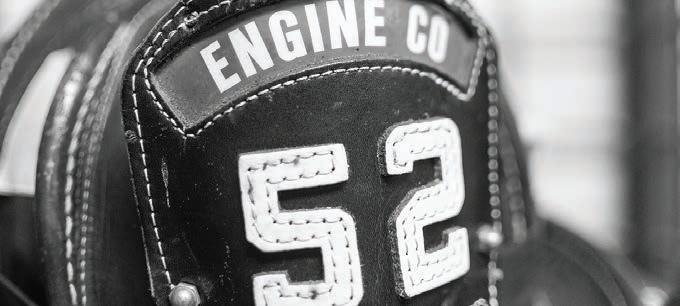
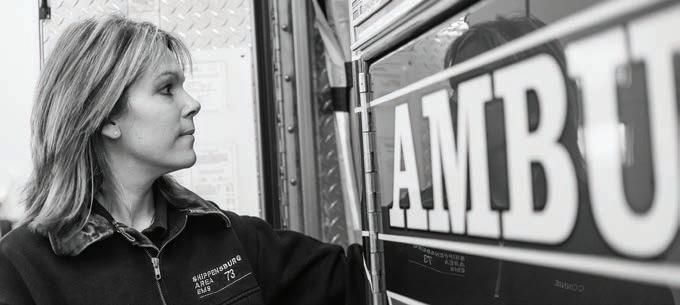


By Lisa McDonald, Communications Manager, City of Oviedo

The Oviedo Fire Department spent the last week of May learning about surface water rescues using new equipment purchased by the depar tment.
Firefighters from all three shifts took turns at Riverside Pool, located in Oviedo’s Riverside Park, training with floatation vests and the equipment on the vests, cutting seatbelts underwater, throwing rope lines, learning techniques on how to save drowning
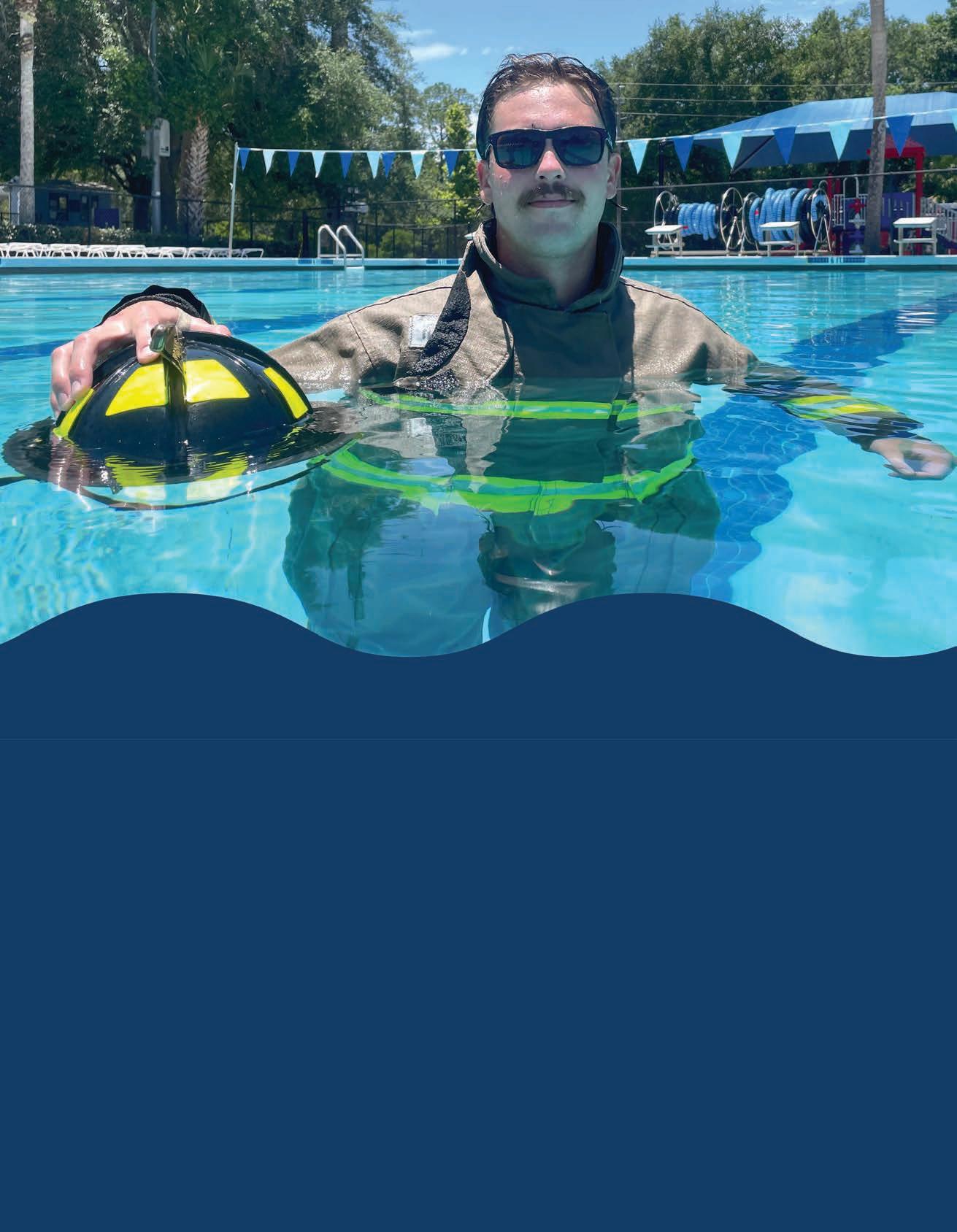
patients and using a backboard to transport patients out of the water.
Firefighters took their time getting familiar with the equipment for rapid response during an emergency.
One of the training highlights was when firefighters took turns putting on bunker gear and trust-falling into the pool to learn how to float should that need arise. Those scenarios could arise if, during firefighting operations,
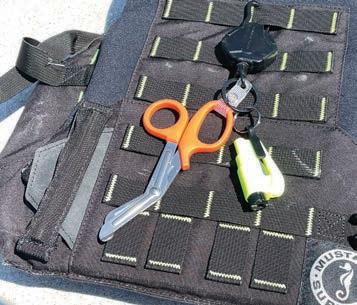
firefighters have jumped into a body of water to escape the flames, or due to limited visibility have fallen into the water, or pool.
It is a well-known fact in the firefighting industry that firefighters are often called out for cars that go into water where a patient could be trapped so they need to learn how to use the equipment they have on hand. It was informative and well-received training for all three shifts.






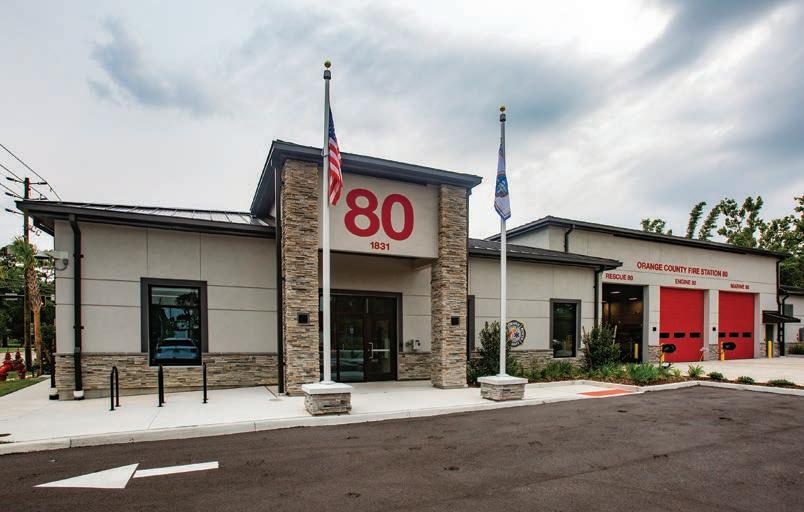
On May 17, 2024, Orange County Fire Recue Department celebrated the opening of its newest fire station. Station 80 ser ves East Orange County and replaces a previous structure built in the 1970s. The station will continue to provide critical lifesaving services to meet the needs of its

rapidly growing community
Residents and community leaders attended the event, with Orange County Jerry L. Demings, Fire Chief James M. Fitzgerald and District 5 Commissioner Emily Bonilla each delivering remarks at the ceremony.




























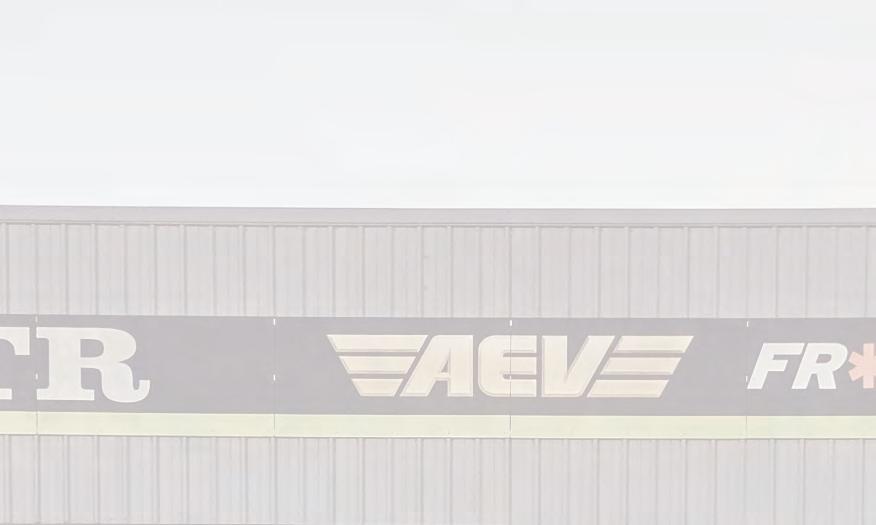

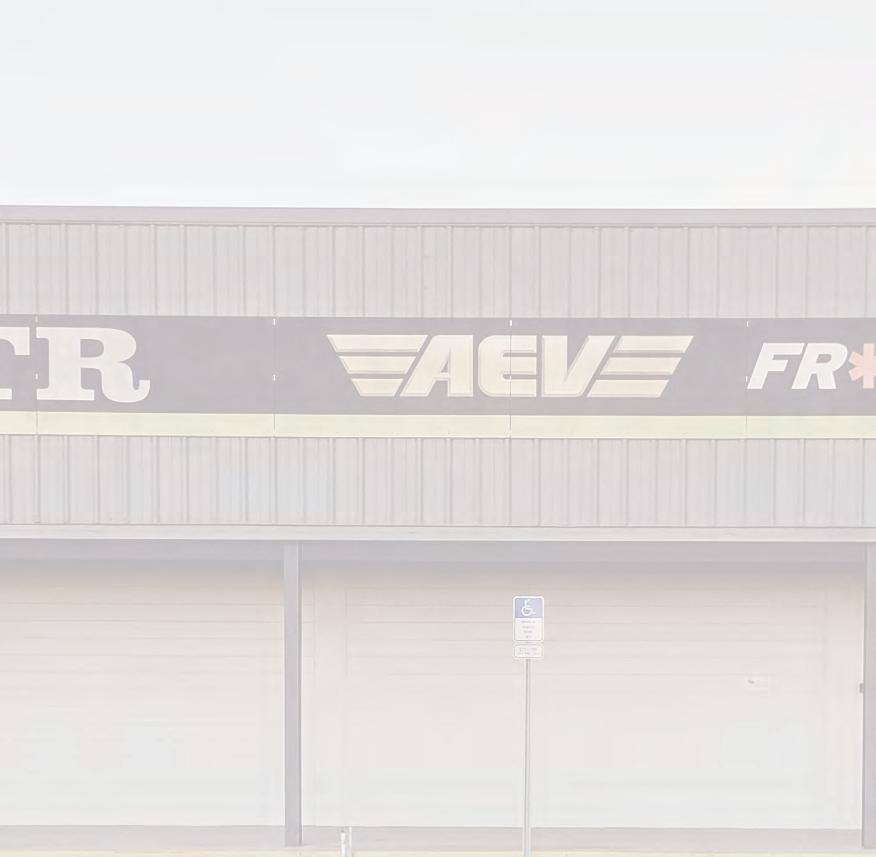




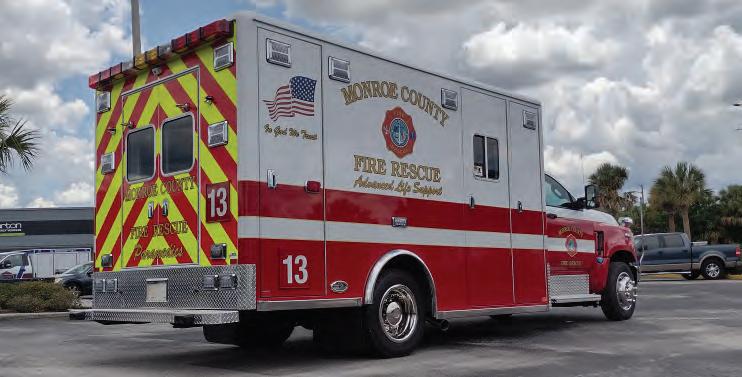














By Doreen Overstreet, APR, Public Safety Information & Education Officer, Seminole County Fire Department

On October 29, 2023, 26-year-old Marcus Frutchey was traveling in a car going 60 mph west bound on I-4 under the Central Pkwy Overpass in Altamonte Springs, Florida when another vehicle also traveling 60 mph was going the wrong direction. This resulted in Marcus being involved in a terrible head-on collision. Seminole County Fire Department (SCFD) crew members were recently reunited with Marcus along with Orlando Health’s trauma team. Crew members were also presented with a Unit Team Citation.
About the call: (SCFD) crew members arrived on scene to find Marcus on the ground. Time was of the essence for medical care as he had a severe abdominal injury which included an abdominal evisceration due to the high impact and severity of the crash.
Since the wreck, Marcus has had 10 surgeries and his injuries included severed intestines, 13 fractured ribs, a fractured back, sternum, both hands, left wrist and right arm and a punctured lung. Marcus has made a remarkable recovery over the past seven months.
His mother and father – Dr. Sandra Frutchey and Dr. Mark Frutchey – credit the SCFD crews for their swift action and professional
attentiveness to the scene and getting him to the hospital so quickly They also thank all the team at Orlando Health Regional Medical Center (ORMC) who treated him. ORMC is proud to be home to Central Florida’s only Level One Trauma Center.
“Our ambulance bay doors have swung open too many times for patients who have suffered immense trauma after high-speed, wrong-way crashes,” said Dr. Tracy Zito, Trauma Medical Director at ORMC. “To see such an incredible recovery is why we do this job. The fight that we see in our patients is what drives our trauma team to do all they can to give our patients that second chance.”

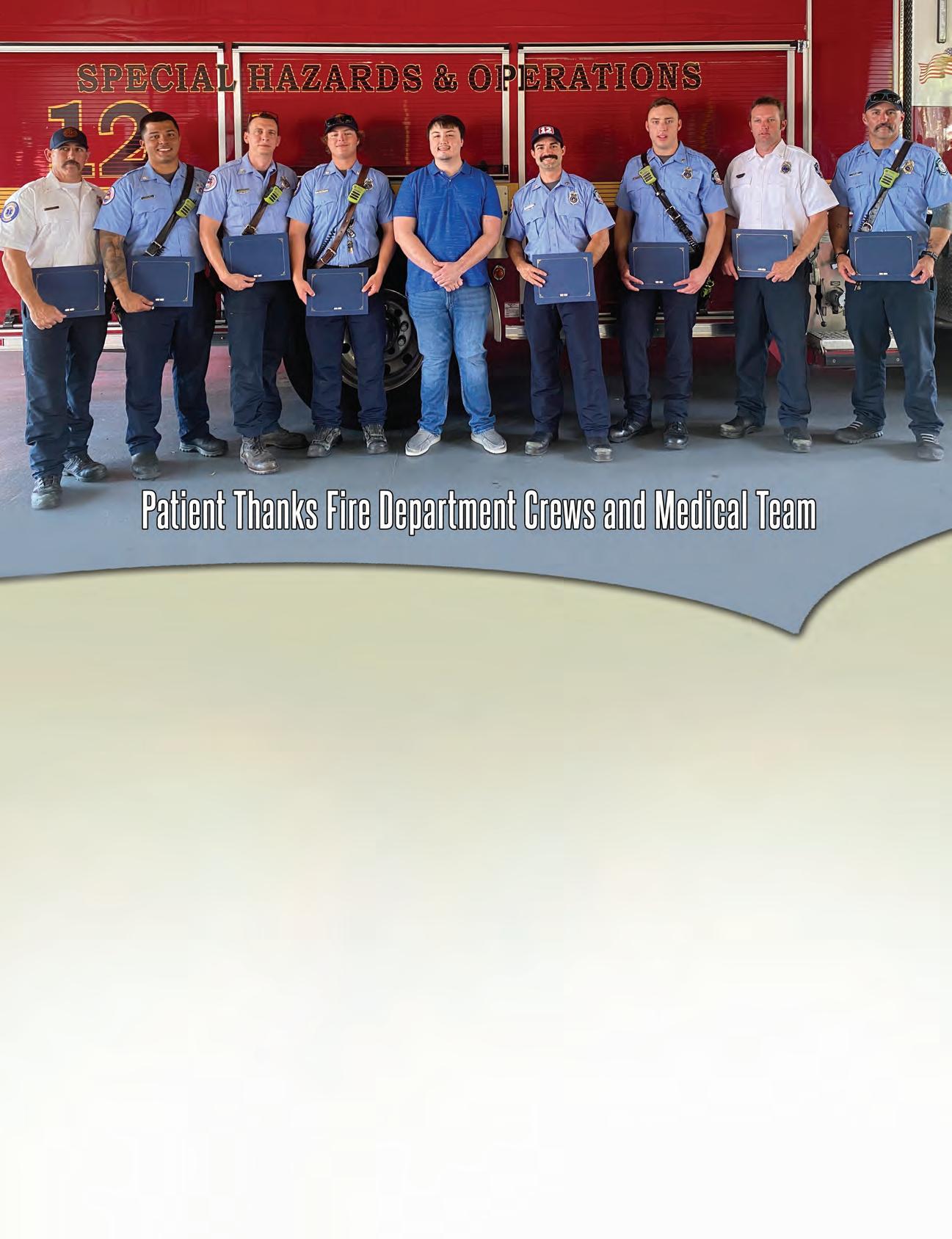
“Our Seminole County Fire Department crews always enjoy meeting our patients,” said Lieutenant Ben Fulton, who was a crew member on the call. “Seeing Marcus walking around and healthy is a true testament to the expertise and partnership that our fire department has with our hospitals. We have outstanding service and care, and we are we are proud to serve Seminole County.”
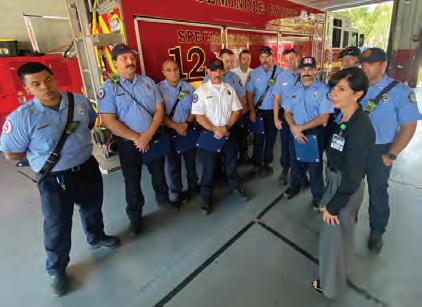
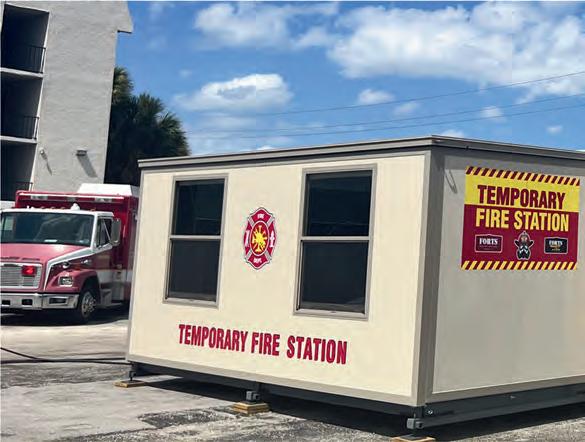

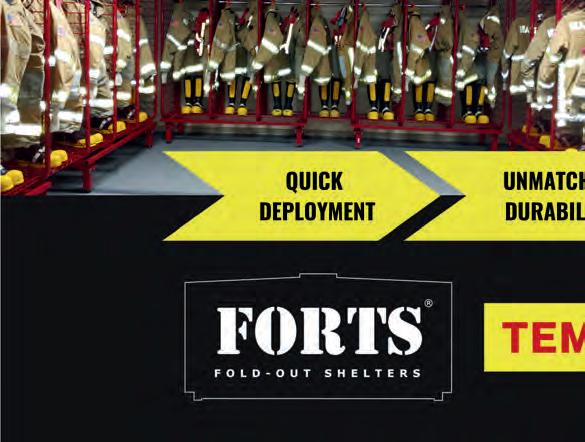
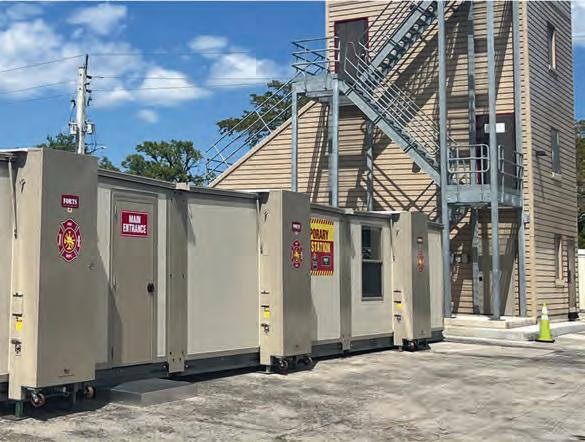

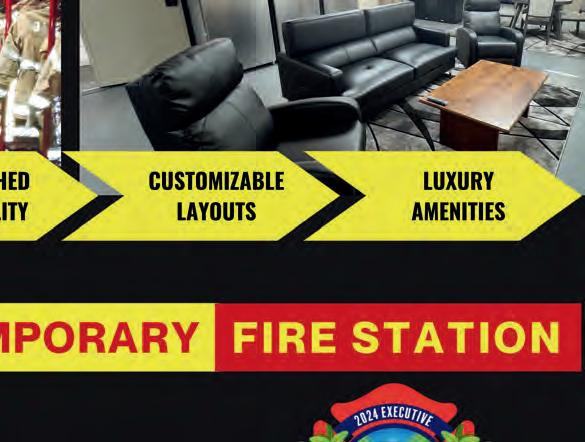
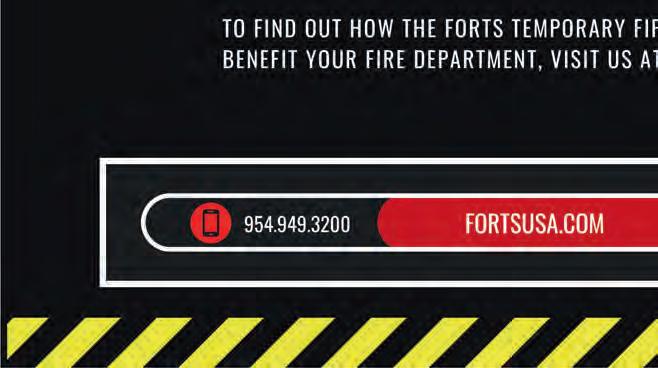
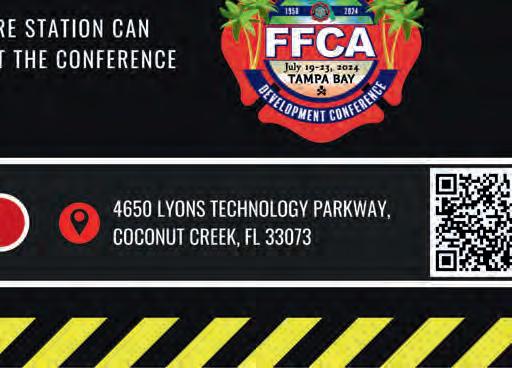
By Greta Hall, FFCA Marketing and Communications Manager
Historically, men have dominated the fire service profession, but more women are carving out a larger space for themselves as committed and engaged fire service members. As of 2020, women made up nine percent of firefighters in the US, representing roughly 90,000 women nationwide. In a push to increase those numbers and foster the next generation of women firefighters, in April 2024, City of St. Augustine Fire Department (SAFD) Fire Chief Carlos Aviles announced the 'Spark the Flame' camp. The inspiration for Spark the Flame came from Iona McGregor Fire District's Camp Brave Heart, a similar initiative that successfully engaged young girls in firefighting.
The Spark the Flame camp took place on May 31 and June 1, 2024, at SAFD's Main Station, located at 101 Malaga Street, St. Augustine. This camp offered a unique chance for female students in the area to explore the firefighting profession and functioned as an empowerment camp for young girls. All activities included elements of team building to help participants overcome fears and obstacles.
A New Dawn for Firefighting
The camp was led by volunteer female

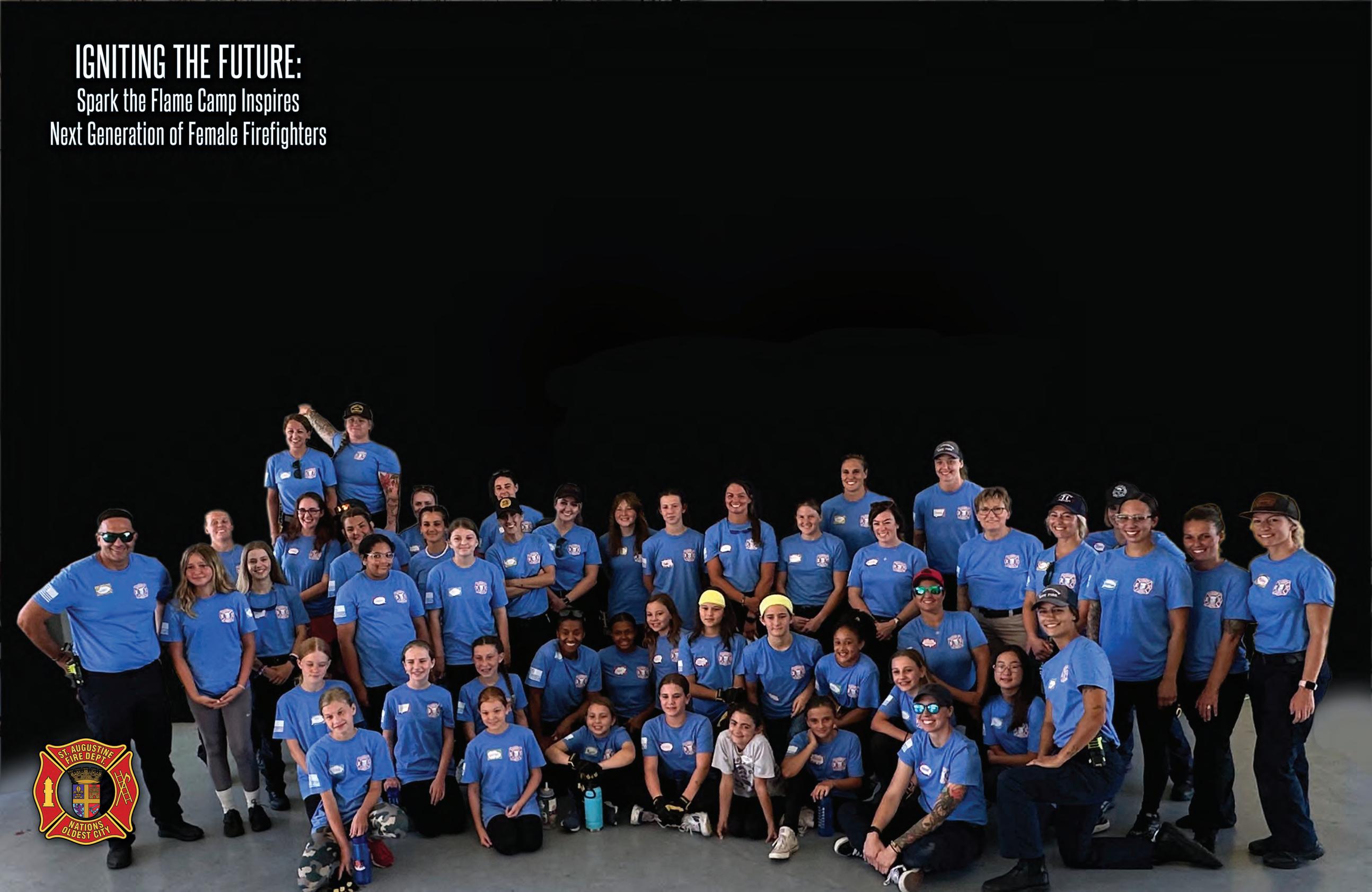
firefighters, who used a multifaceted approach to educate participants about the responsibilities and challenges of the profession. The camp not only offered handson activities but also facilitated meaningful conversations about the role of women in firefighting. By addressing historical barriers and future opportunities, the camp counselors sought to foster confidence and teamwork, emphasizing the importance of collaboration and mutual support in the fire service.

Emmie, who had just finished sixth grade, stated, "I always thought that they just fight fires, but there's so much more that goes into it," Emmie shared. "I have learned that I have a lot more self-confidence in myself than I would think that I do."
Dionne Streete, a paramedic from Iona McGregor Fire District, who helped teach the girls, highlighted the rejuvenating effect of the camp. "We get a shot in the arm. We are reinvigorated. Watching these young girls overcome some struggles or watching them come in confident and just crush it," Streete said. "I always reminded them; it doesn't matter if you ever work a day in the field of fire service. Everything that you got today is yours forever. It is transferable to life."
The primar y objective of Spark the Flame was to inspire and empower young girls, demonstrating that they can aspire to and succeed in a career as a firefighter. The introduction of Spark the Flame comes at a crucial time. As more women enter the firefighting profession, they bring diverse perspectives and strengths that enhance the effectiveness and resilience of fire departments.
Hannah Riederich, a firefighter with the St. Augustine Fire Department for three years, found the camp so
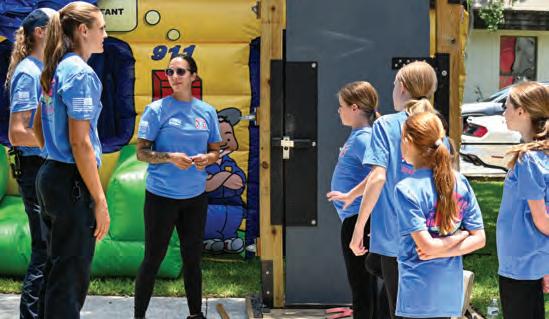
impactful. "Coming from where I was as a little girl, I did not know this was a career option for me. Everyone comes in, and they are super intimidated and really quiet. Throughout the day, they get to know each other and come out of their comfort zone, and they love it," Riederich said. "We have already had girls that said, 'I want to do the fire service now.' I feel great. This has been the best."
Chief Carlos Aviles is optimistic about the potential impact of Spark the Flame. "Wewant to show these young women that they can achieve anything they set their minds to," he stated. "By providing them with the tools, knowledge, and support, we're not just sparking an interest in firefighting; we're igniting a
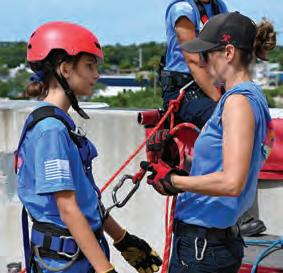

lifelong passion for service and community. I can't express how proud I am of all the volunteers that helped make this possible.
The feedback has been incredible, and I, as the Fire Chief, learned a lot from the girls and the volunteers. I think we found something we didn't know we needed," Aviles added.
Spark the Flame is more than just a camp; it's a movement toward a more inclusive and diverse firefighting community.

As young girls don their helmets and gear up for the challenges ahead, they represent the future of fire service, where women play an integral role in protecting and serving their communities. Through initiatives like Spark the Flame, the City of St. Augustine Fire Department is playing a part and leading the way in empowering the next generation of female firefighters, ensuring that the brave tradition of firefighting is carried forward by all who are willing and able to serve, regardless of gender.
Thank you to the local, regional, and statewide volunteer female firefighters from the City of St. Augustine Fire Department, Iona McGregor Fire District, St. Johns County Fire Rescue, Jacksonville Fire and Rescue, Ft. Meyers Fire District, Putnam County Fire Rescue, Polk County Fire Rescue, Orange County Fire Rescue, Flagler County Fire Rescue, and Palm Coast Fire Department. Also, a special Thank You to Director JoAnne Rice, State Fire Marshal's office, Dr. Tracy Hejmanowski of the First Responder Project, and Chief Stephanie Whaley, Section Chief of Health and Wellness, St. Johns County Fire Rescue.
* Farrar, A. (2024, June 2). St. Augustine Fire Department empowers girls with first-ever firefighting camp. WJXT. https://www.news4jax.com/news/local/2024/06/01/st-augustine-fire-departmentempowers-girls-with-first-ever-firefighting-camp/
By Mackenzie McClintock, Public Information Officer, South Walton Fire District
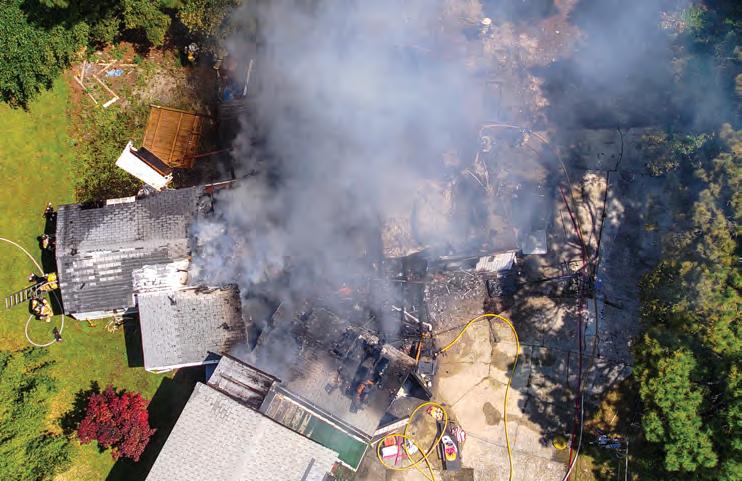
South Walton Fire District firefighters responded to multiple structure fire incidents on June 10, resulting in the response of more than 50 firefighters throughout the day to contain and mitigate the two incidents.
The first fire took place at approximately 3:23 a.m. in Rosemar y Beach, when SWFD Dispatchers received the 911 call reporting “multiple buildings on fire” near Windward Lane.
When crews arrived on-scene at 3:31 a.m., they found a primaryresidence and its carriage house heavily involved with fire. SWFD Engine 1 and Rescue 1 initiated fire attack to protect the exposed structures and bring the fire under control.
Firefighters continued overhaul and extinguishment operations until approximately 7 a.m. when they reported back to their stations for shift change. In total, approximately 25 firefighters responded to the scene, including mutual aid from Bay County Fire Rescue.
Later in the day at 10:30 a.m., another structure fire occurred on N. Holiday Road in Miramar Beach. Multiple 911 callers reported heavy smoke and fire were visible from a shed-like structure located on the backside ofa residence.

Engine 5 and Rescue 5 firefighters arrived at 10:36 a.m. and initiated a fire attack.
Approximately 25 firefighters responded to the scene and worked for three hours mitigating the incident, including mutual aid from Destin Fire Control District.
No injuries were reported in either incident. However, there were occupants inside both structures who were able to make it out of the residences safely before firefighters arrived.
The structures suffered significant damage and the causes of the fires were deemed undetermined. Fortunately, the exposed homes were not impacted.
SWFD would like to thank all responding mutual aid crews and Walton County Sheriff’s Office deputies for assisting at these incidents.
This includes Miramar Beach Strength and Conditioning, whose business provided much needed shade and water for firefighters on-scene at N. Holiday Road.














































































































By Greg Rogers
From the outset of firefighter training, we lay
a foundation that teaches new recruits to focus on details. Attention to detail is one of the things that keeps firefighters safe, improves efficiency, and makes fires go out (and stay out).
We teach our newest members to be on time and ready to perform the job. We require them to keep their uniforms sharp and their turnout gear well maintained. We train them to put things away in a particular manner and to be consistent. They learn to stand in formation and how to march. The expectations we place on them might seem like overkill or even unnecessary, but everything has a purpose.
Why do they train to march? We don’t march on the fireground. Why stand in formation?
Most departments today don’t conduct a formal roll call with company lineups. Why do we teach them that early is on time and on time is late?
The answer to all those questions is twofold: details and discipline.
Colonial soldiers received essential training from their leaders in marching and weapon handling due to the demands of the time.
War fare then was characterized by face-to-face

combat on open battlefields, making such skills critical for survival and effectiveness.
While today’s wars are not fought in the same manner, members of our armed forces are still taught how to march in formation and handle weapons ceremonially. This teaches discipline and attention to detail, and that attention to detail transcends the service and its operations.
Similarly, we train new firefighters to pay attention to detail. This foundation of seemingly minor details conditions the member to look at everything with the same attention to detail. As they progress through their careers, this focus on detail will lead to efficiency, effectiveness, and, most importantly, safety.
Avoiding Complacency
Details lead to discipline. In this job, it’s far too easy to become complacent. Discipline prevents that and keeps us on the straight and narrow. It’s important to emphasize that this isn’t about discipline in a punitive sense. It’s about self-discipline and self-accountability Mr. and Mrs. Smith might not care if your boots are polished or if your belt buckle is straight. They expect you to be a professional and to take your job and their lives seriously They want you to show up quickly and provide the help they need. If you aren’t disciplined enough to focus on the job, you are failing them and your fellow firefighters.
At the same time, discipline and focus are rooted in little things like belt buckles and boots. All firefighters should begin each shift with an equipment check regardless of rank or position. This check is detail-oriented, and the focus is to verify that all equipment is operating and is in good order.
Your PPE is your last line of defense on the fireground. It’s expected to last for at least ten years and provide protection from heat, moisture and certain chemicals. You should be looking at it every time you show up at the firehouse. Imagine how many times that zipper must go up and down or how often the stitching on your sleeves is stretched. Consider how much wear and tear the vapor barrier must endure to keep you safe from steam burns. Your wristlets are made of elastic that can wear out over time, leaving you at risk for injuries. These are all minor details, but they matter in a big way.
Your SCBA is likely the most essential piece of personal equipment. It’s sophisticated and contains many parts that could fail. As durable as these things are, your attention to detail is required each shift to ensure it works properly This isn’t just a cursory check to make sure it’s there. You should be checking it for readiness and to monitor wear and tear Your air cylinder should be full, and the PASS device should function as designed. Check your face piece for cracks and crazing. These are details that might be overlooked and lead to face-piece failure, which could be fatal.
The SCBA check should include the seatback mounting bracket assembly.You don’t want to show up at a fire and be unable to get out of your seat because the bracket is out of adjustment or the release mechanism has failed. Apparatus checks might be conducted by the engineer or handled as a company effort.
Regardless of who’s responsible for the rig, all company members should be checking equipment, hose loads and appliances. Doing this reinforces your knowledge of equipment operation and ensures added layers of accountability. This should not be a quest to find a deficiency or for a “gotcha moment” on the previous shift. If you see something amiss, correct it.
Don’t forget to check your radio. Today’s radio systems can be complicated, with multiple channel banks and talk groups. Is your radio set up correctly for you? Is your battery fully charged? Is there damage to the radio itself? A cracked radio could allow water intrusion, rendering the radio useless and leaving you without a way communicate on the fireground.
The daily check should be detail-oriented enough to catch things like dirt and corrosion. Metal tools need to be maintained and protected to prevent rust. The high-tech stuff
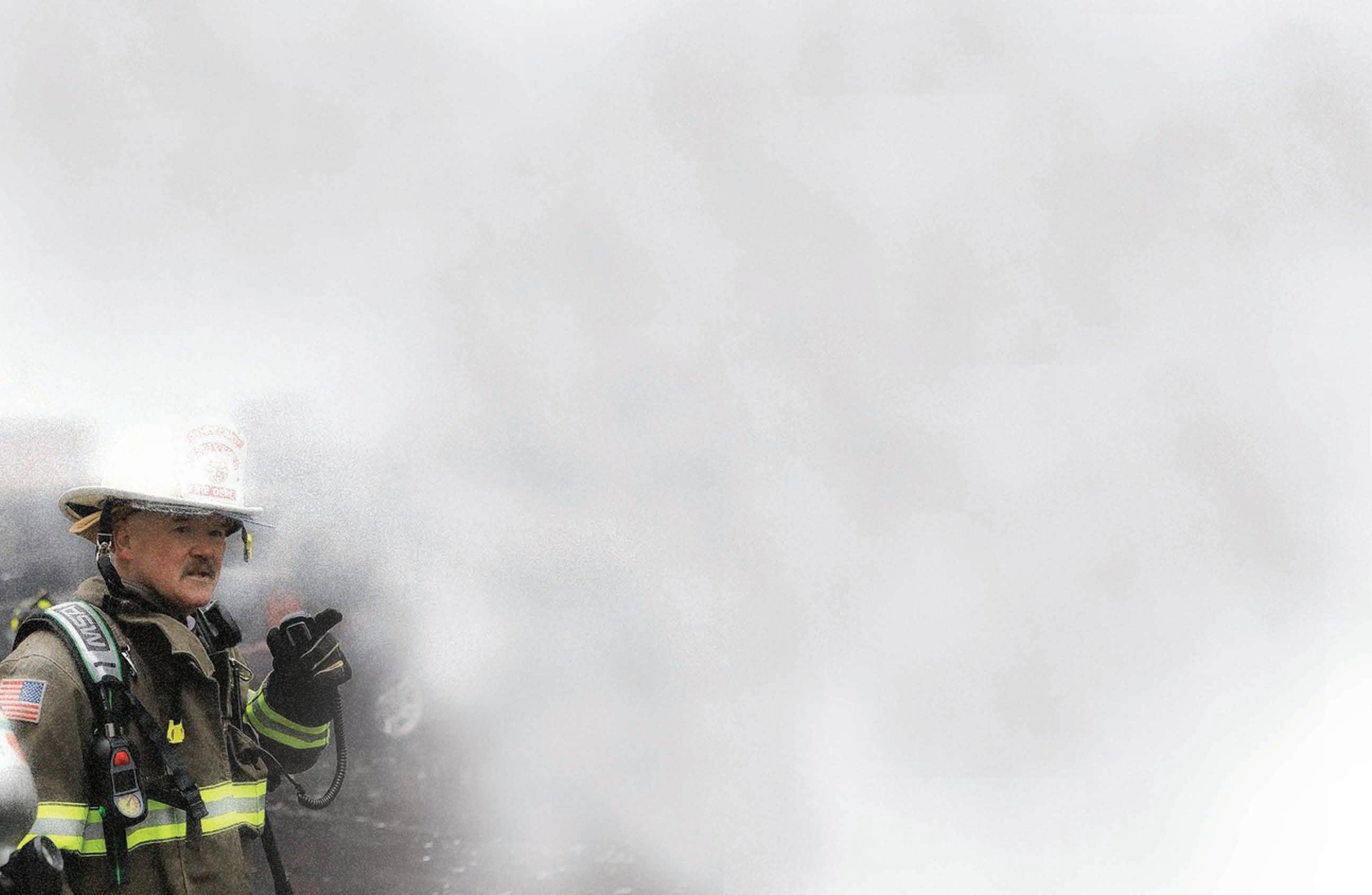
needs attention, too. A dirty lens could render your thermal imager useless in a fire, and you definitely don’t want to discover a problem while searching for a trapped child. Sawblades and chains need to be inspected for sharpness and proper installation. Don’t let someone else’s complacency lead to your mission failure.
But equipment checks aren’t just about finding broken or dirty stuff. Consider the importance of equipment locations. If someone uses a tool and puts it back in the wrong place, precious time could be wasted on the fireground, and in this business, time equals lost life and property. If the irons are supposed to be in the second compartment on the officer’s side of the rig, that’s where they should be. If you have a better idea for equipment stowage, route that idea through your chain of command. In a healthy and professional environment, those requests should be considered and approved if appropriate.
Consider the importance of something that seems minor, like a hose adapter. One missing adapter could delay the establishment of a water supply, which could mean the difference between life and death.
Not everybody rides an engine or truck. Chiefs need to check their rigs, too. Are the pre-plans in order? Is the MDT functioning correctly? Do you have enough fuel for the shift? Chiefs have PPE and should be checking it just like everyone else. After all, we’re all firefighters, right?
Over time, deficiencies will be found. This is not always an indictment of the previous user or the quality of your maintenance program. Sometimes, things break, and it’s on you to discover and fix the problem, if possible.
A Culture of Alertness
My message here isn’t just about checking fire trucks and equipment. Attention to detail is a thread that winds its way through the tapestry of the fire service. A sharp eye is required of all of us as we work in our communities.
Details matter in everything we do. We learn to read smoke and understand the clues its color, intensity and velocity give us. Details like the color of the smoke can have even more information hidden in nuance. The same color of smoke can mean different things based on the size of the building, the contents and the weather. We need to pay attention to building size and air temperature. Cold temperatures can fool us into believing that a fire is smaller than it is. Larger buildings tend to scrub smoke and allow it to dissipate,
sometimes masking intense fires within. Firefighters should be attuned to the details and nuances of building features. The casual observer may be unable to tell an actual masonry wall from brick veneer, but this skill is fundamental for firefighters. Other detailoriented construction cues are different colored bricks on an old building. This might give us a clue that it has been modified and that our egress is limited. Multiple electric meters or mailboxes could indicate a house has been broken up into apartments. How many windows are there? Are they uniform in size? Small windows are often found in bathrooms, while windows with higher sills may indicate a kitchen. In some cases, decorative windows can throw us a curve ball. A trained eye should be able to identify them quickly. It’s in the details.
Paying attention to seemingly minor changes can pay dividends in this job. It’s easy to drive down Main Street with blinders on, not noticing minor changes to buildings or occupancies. What was once a shoe store might become a jewelry store, and that might mean it’s been fortified against burglars. If it’s fortified for burglary, it’s fortified against us, too. That same building might sport a new peaked roof over the top of what was once a flat one. While that change might be noticeable to anyone, it’sa detail you should share with the next generation of firefighters in your department.
Little details can give us big clues. Consider a strip mall in Anytown, USA. It has a pizza shop, a Chinese takeout restaurant, a dollar store, and a hair salon. You would not expect any of these to be occupied in the middle of the night, but imagine showing up for a building fire at 3 a.m. and discovering a few cars parked in the lot. Might that indicate that people are inside? It certainly wouldn’t be the first time workers had unauthorized sleeping quarters in a commercial building.
Speaking of Anytown, do you know where your district ends and the next one begins? This can be tricky in some areas, but it can be vital as it relates to legality and responsibility. Even if you have comprehensive mutual aid agreements with your neighbors, you should know whose territory you’re in. This is important as it applies to notifying other agencies like law enforcement and EMS.
Big things are modular. They’re made up of little things, and that’s why details are important. Missing a minor detail can create a cascading effect leading to calamity. Say an engineer smells engine coolant after returning
from a call but doesn’t follow up. Hours later, the company is dispatched to a house fire with people trapped. They arrive on scene and get to work on the call they’ve trained for a thousand times. They advance their hoseline through the front door and begin a push into the smoky abyss. Outside, the engineer is establishing a water supply when he hears an alarm from the pump panel. The engine is overheating. The coolant he smelled earlier has entirely run out. He tells the incident commander that the rig is overheating and the crew needs to be pulled out. The incident commander orders the captain and crew to retreat from the building. The company has almost reached the fire room and is the only chance at survival for the trapped resident. The captain replies that they’re “getting it” and searching for the occupant, but the IC repeats the order to retreat immediately. Frustrated but aware that the order is in their best interest, the captain ensures members of the crew make their way out.
Outside, lines are being stretched from another engine, and a different company is assigned to continue the fire attack. Unfortunately, the fire has gained too much ground and has extended into the attic. Due to the conditions, crews cannot effect rescue of the trapped occupant. This is now a fatal fire. What started as a coolant leak has had a profound effect.
In the fire service, details matter There’sa reason your department has a whole set of policies regarding inspecting your equipment, apparatus, technology, and so on. Every little thing counts, whether related to equipment, operations, or communication. Missed details can have dire consequences, so take the time to find and fix them before they catch up with you.
Greg Rogers is a Content Developer for Lexipol with over two decades of experience in fire and emergency services. He is a retired Battalion Chief from the Ridge Road Fire District in Greece, New York, where he developed and implemented programs that improved service delivery and firefighter safety. He is also a nationally certified fire instructor with experience in emergency vehicle operations, engine company operations, and building construction. In addition to his fire service experience, Greg has a background in maritime search and rescue and law enforcement with the U.S. Coast Guard and Coast Guard Reserve. Chief Rogers holds a degree in Fire Protection and has studied at The National Fire Academy as well as the U.S. Coast Guard Chief Petty Officer Academy.
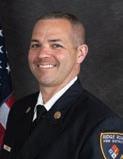
By Tom Reyes, Captain, Public Information Officer, Palm Beach County Fire Rescue
In the early hours of May 2, 2024, Palm Beach County Fire Rescue (PBCFR) received a 911 call regarding multiple explosions. Responding units observed a thick column of smoke and flames as they approached the scene, which turned out to be a large car auction lot holding hundreds of damaged and totaled cars. The arrival report suggested that over 20 vehicles were burning and fire was spreading rapidly.
To combat the fire, command decided to employ tactics commonly used to extinguish br ush fires. First, they determined the direction of the fire and launched a direct attack on the "head" of the blaze, effectively halting its for ward progress. Subsequently, they conducted a flanking attack to ensure that the other vehicles in the row were also extinguished. Since the nearest hydrant was located over 1500 feet away, a water shuttle operation was used to supply the attack engines. A nearby storm drain was covered
preventing contaminated runoff.
After 40 minutes of intense effort, the fire was brought under control. The car lot owner had arrived, and a large front-end loader was used to “cut a fire-line,” making a 20-foot separation between the burned and unburned cars. PBCFR Fire Investigators then analyzed burn patterns and thermal damage, pinpointing both the vehicle of origin and the initial cause. It was discovered that the source vehicle had sustained front-end damage in a collision. The ignition source was further identified as a lead-acid car batter y that had not been disconnected. Over time, heat accumulated within the damaged battery, and an electrical shor t triggered the initial ignition. The fire then spread to rubber and plastic components in the engine compartment, eventually burning through a fuel line. The gasoline ignited, ran along the ground, and set off a chain reaction fire among the row of cars in a domino-type fashion. The intense flames

caused multiple tires to violently explode. It was those explosions that initially alerted people of the emergency. A total of 31 cars were affected in this fire.
Thirty-five personnel in seventeen units were assigned to the incident. Palm Beach County Fire Rescue dispatched four engines, two rescues, one squad, two tenders, an EMS captain (safety officer), a battalion chief, two investigators, and their public infor mation officer. Additionally, Palm Beach Gardens Fire Rescue assisted with a battalion chief, ladder, and rescue unit. Our lead fire investigator pointed out that one of the first ignition sources to rule out in vehicle fires that start after a car has been in an accident is the batter y. It doesn’t matter the type. all damaged batteries can give off heat and/or spark. This is another reason why disconnecting the batteries at crashes is not only a safety issue on the scene but can prevent problems later.

By Stephanie Lewis, Public Relations and Information Manager, Lakeland Fire Department
The Lakeland Fire Department is pleased to announce David Sutherland has been appointed as the department’s newest Fire Marshal.
Fire Chief Doug Riley expressed his enthusiasm for David’s appointment as head of the Prevention Division. He stated, “We are thrilled to announce that David Sutherland will lead the division. With his extensive background and strong dedication to fire safety and prevention, he will be an incredible asset in spearheading efforts throughout our community.”
David Sutherland is a seasoned professional with over ten years of experience in fire service and fire safety management. Currently serving as the Fire Marshal for the Lakeland Fire Department, David is dedicated to ensuring the safety and security of the community through effective fire prevention and education.
David began his career in fire service by completing Fire Standards and an Emergency Medical Technicians (EMT) certificate from Hillsborough Community College (HCC) in 2013. His academic pursuits continued with the completion of his Paramedic certificate in 2016, followed by an Associate of Science in Emergency Medical Services at HCC in 2018 and a Bachelor of Science in Fire and Emergency Services at the University of Florida in 2023. These educational milestones have equipped David with a strong foundation and a comprehensive understanding of fire safety and emergency management.
A series of progressive roles have marked David’s career in the fire department. He started as a Firefighter/EMT (2014-16), then advanced to Firefighter/Paramedic (2016-18). He further honed his skills as a Fire Inspector I (2018-22) and Fire Inspector II (2022-24) before assuming the role of Fire Marshal. In this leadership position, he oversees fire inspections, investigations, and construction plans review, ensuring the safety of the Lakeland community by preventing injuries, deaths, and property damage while improving citizens’ quality of life.
According to Cheryl Edwards, Lakeland’s most recent serving Fire Marshal, who is set to retire in June this year, “David’s experience and fresh perspective align with the City’s core values and vision for the future. His proven leadership and commitment to excellence make him the ideal choice to lead the Prevention Division into a new era of innovation and success.”
David’s commitment to continuous improvement is evident in his involvement with professional organizations such as the National Fire Protection Association (NFPA) and the International Association of Arson Investigators (IAAI). He regularly participates in workshops and conferences to stay updated on the latest trends and technologies in fire prevention and investigation.
David holds several certifications, including State of Florida: Fire Inspector I & II, Fire Investigator, NFPA: Certified Fire Plans Examiner, and University of Florida: Certificate in Emergency Management. He is a member of the Florida Fire Marshals and Inspectors Association (FFMIA) and the Florida Fire Sprinkler Association (FFSA).
David plans to pursue his NFPA Certified Fire Protection Specialist certification while concurrently working on his Master’s in Disaster Management at the University of Florida. He will also continue to strive for career advancement within his department.
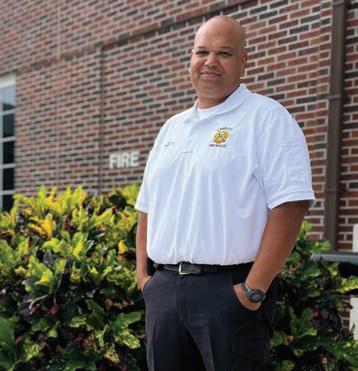
David is honored and thrilled to take on this new role as Fire Marshal. “As someone who has dedicated their career to the Lakeland Fire Department, I look forward to the opportunity to further serve and protect our community,” says David. “I hope to use my experience and knowledge to help our department continue to grow and thrive in the years to come.”

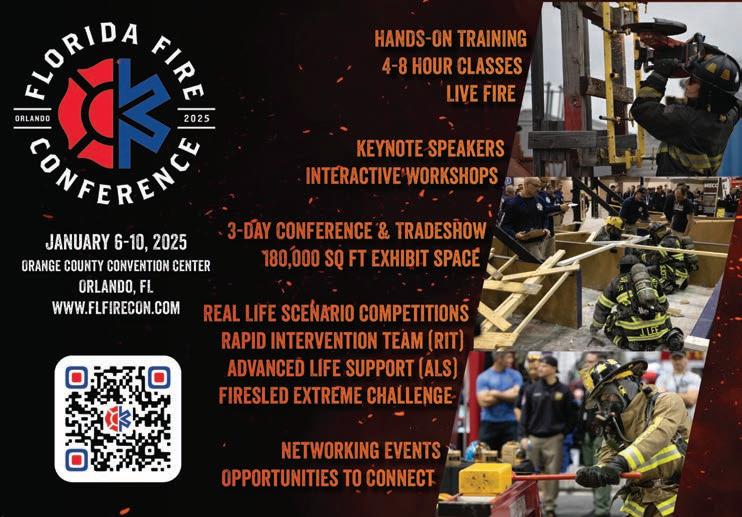
By Lieutenant Patrick Juliano, Fire Public Information Officer, Palm Coast Fire Department
On May 25, 2024, the Palm Coast Fire Department hosted a Gold Star Dedication ceremony in which they dedicated Fire Engine 23 in memory of Army Sergeant Luke Stanford. The ceremony took place at Fire Station 25 with the family and friends of Sergeant Stanford, Gold Star Families, and Fire Department personnel.
Army Sergeant Luke Stanford was born in Hartford, Connecticut, and graduated from Newington High School in 1998. He attended the University of Tampa and later settled in the Orlando area before enlisting in the United States Army in 2004. He completed basic training at Fort Leonard Wood, Missouri, and was assigned to Charlie Company, 16th Engineer Battalion.
In January 2006, he was deployed to Tal Afar, Iraq, where his unit conducted numerous mounted and dismounted patrols. In September, his platoon moved south to Ramadi to complete their tour. He re-enlisted and was serving with the 911th Engineer Company

Technical Rescue at the time of his death.
Promoted to Sergeant for his leadership skills and knowledge, he led the Alpha Team of the 911th. He aspired to complete his degree and had promising plans to join the ATF. He was proudly serving his country until his sudden passing on October 4, 2008.

For Tim and Carmen Stanford, a Gold Star Family, Memorial Day is a day marked by pain and a poignant reminder of their loss. Despite their grief and challenges, the Stanfords have dedicated themselves to giving back to their community and educating the nation about the true meaning of Memorial Day They have kept Luke’s memory and legacy alive in their daily lives. Since moving to Palm Coast, Tim and Carmen have instilled a sense of civic and patriotic duty in their daughter Emma. Together, they established

EmmaLovesK9s, a 501(c)(3) charitable organization that supports retired K-9s and their handlers with food and medical expenses. Emma’s passion inspired state leaders to create the Care for Retired Police Dog Program through Senate Bill 226, which Governor DeSantis signed into law in June 2022.
The idea for dedicating a fire truck to the memory of a Fallen Solider was proposed by Driver Engineer Paramedic Christopher Strozier, who is a Navy Veteran. Driver Engineer Strozier stated, “We often forget why we have the rights and freedoms we do. Dedicating the fire engine to the memory of Gold Star Families is a small way to show our appreciation for what they have sacrificed.”
“We are incredibly proud that Sergeant Stanford’s memory will now accompany Palm Coast Fire Engine 23 as they strive to deliver the best service to our community every time. They protect the lives and property of our residents and restore stability in times of chaos,” said Fire Chief Kyle Berryhill.
By Gregory G. Sutton, Battalion Chief of Administration, Public Information Officer, Titusville Fire Department
On Friday May 17, family, friends, dignitaries, and members of Titusville Fire Department gathered to welcome four new firefighters and recognize the promotions of five others. Welcome to our family Firefighter/EMT Cristian D’Angelo, Firefighter/Paramedic Emily Fuller,
Firefighter/EMT Daniel Velarde and Firefighter/EMT Mason Witherite. We are also proud to announce the promotion of Kyle George and Timothy Hammond to the rank of Driver/Operator, and Jason Lengefeld and Billy Wiegert to the rank of Lieutenant. Finally, David Neeld was
promoted to the rank of Captain, and will be leading our new community paramedic initiative. We are proud of each one recognized at the ceremony and wish them continued success in their career with our department.
Thank you to all that attended.
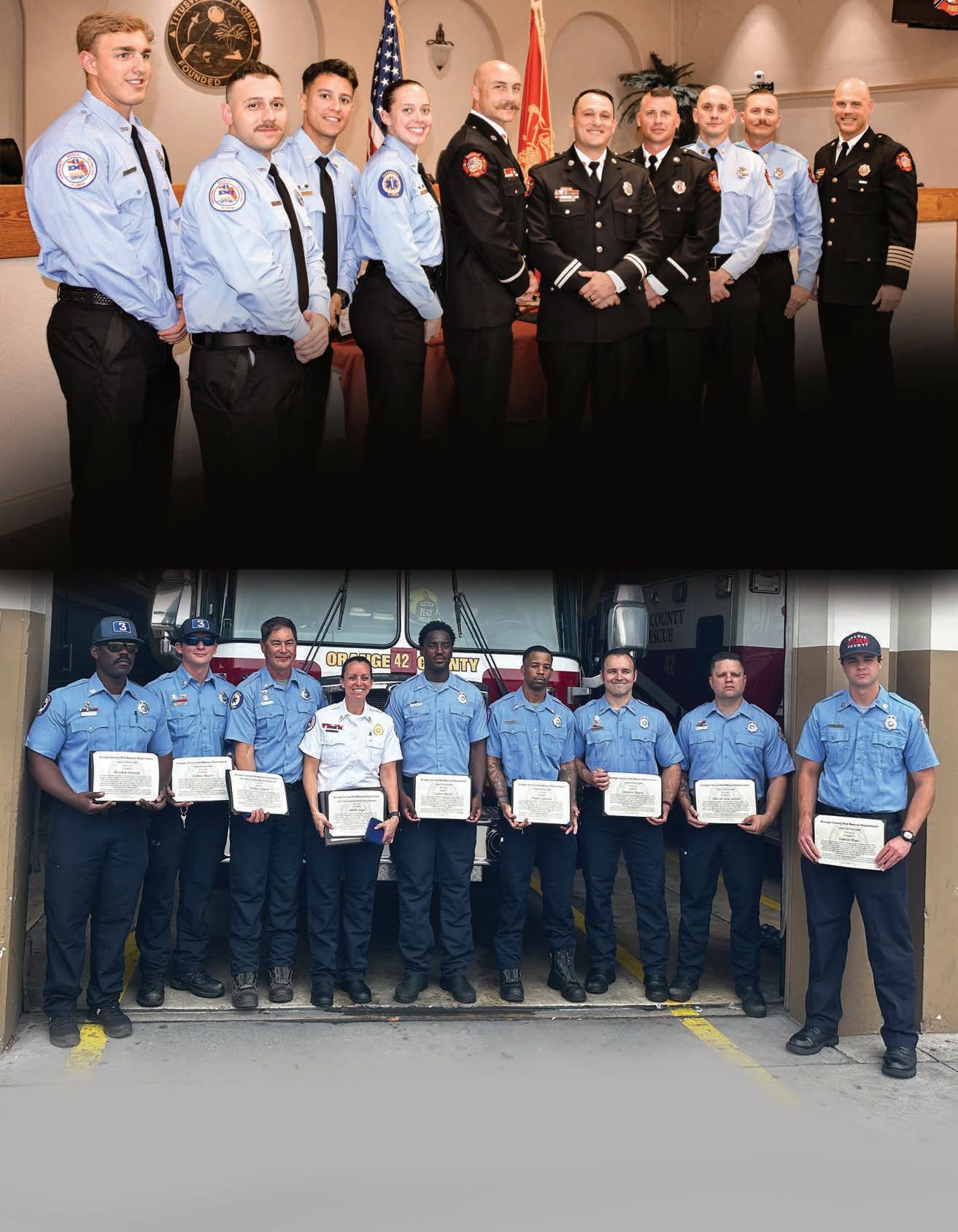
By Isabella Thalheimer, PIO Intern, Orange County Fire Rescue
On April 10, 2024, Orange County Fire Rescue’s crew from Station 42 witnessed a vehicle leave the roadway and crash into a retention pond directly next to their station.
Members of the crew immediately entered the water and responded to the witnessed still
alarm to begin rescue efforts. Personnel pulled the victim out of the vehicle’s open window moments before it sank and assisted the driver to the shore, where she was transported to the hospital by paramedics without injury.
On May 10, 2024, Lieutenant Amber Lugo and Engineer Phillip Hubert were presented
with Distinguished Service Awards for entering the water to rescue the driver. Unit Citations were also awarded to members of Engine 42, Rescue 42, Squad 3, Medic 8 and Rescue 142 who responded to the call and contributed to the driver’s positive outcome.

By Matt Ferguson, Administrative Chief
With the recent passing of Battalion Chief Andrew English, the family from Dixie County Fire Rescue would like to shed light on the journey of Chief English’s extensive career. Throughout his illustrious fire career, Andy was a pioneer and true craftsman of the trade, dedicating a generous portion of his time as an instructor for many different agencies, where he taught hundreds if not thousands of students.
The lengthy career that Chief English served came with many achievements and many memories. Although words cannot begin to define the many feats that he overcame we would like to share these accomplishments. Chief English completed his standards at Florida State Fire College in the year of 1988. In the year 1992, Chief English completed Emergency Medical Technician. Then following his burning passion for the fire service, he completed the grueling task of becoming a Florida Certified Smoke Diver. Followed by this Chief English furthered his medical career and completed his Paramedic Certification. All the certifications and classes completed over the years by Chief English just begin to open the door to the man he was and his wealth of knowledge stemming from the fire service.
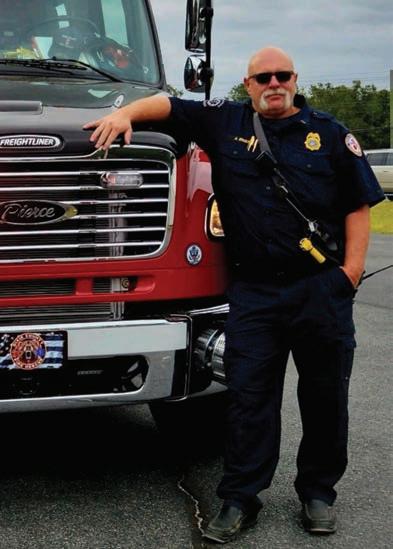
Spanning a career of over 36 years, Andy worked for agencies such as Levy County, Chiefland Fire Rescue, and Dixie County. Chief English was hired in 1997 by Marion County Fire Rescue and dedicated over 18 years, where he held the rank of Lieutenant upon retirement in 2015. After spending some time in retirement, Andy decided to come back to his passion for the Fire Service and became a firefighter for Chiefland Fire Rescue, before calling Dixie County Fire Rescue his home again in January of 2019.
During his time with our department, Chief English continued impacting the lives of his co-workers and was promoted to the rank of Lieutenant in March of 2022. From there, Andy took on the role of Training Coordinator, encompassing both medical and fire. In March of 2023, Andy was promoted to the rank of Battalion Chief, and held this rank until his passing.
Our department is left with the burden of trying to move on from the massive impact his presence left. While the road ahead will be long and daunting, the men and women of DCFR will rise and continue as one with the same passion and dedication in Chief English’s remembrance that he would expect.
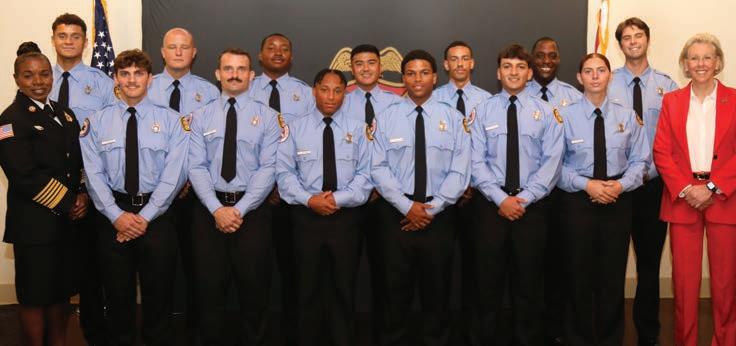
By Vivian Shedd, Public Information Officer
On May 24, 2024, Tampa Fire Rescue welcomed 13 new firefighters within the department. Their graduation follows a grueling six-week orientation, filled with live fire training, water rescues and classroom learning. Congratulations to the 13 members from recruit class 24-01 on their graduation: Gabriel Azarcon, Zackary Castanon, Hector Irizarry, Kamran Joyer, Dalton Mace, Kambree Perkins, Elijah Pettway, Andrew Pillai, Elijah Rhoden, Joshua Rossi, Joshua Scurlock, Kenneth Siplin and Rufus Wiggins IV.
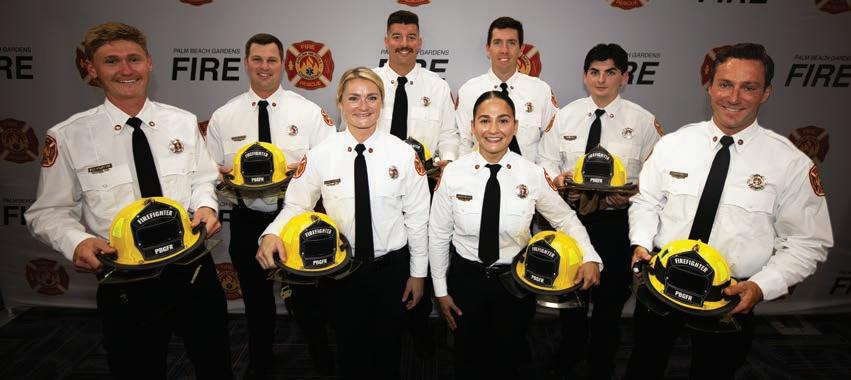
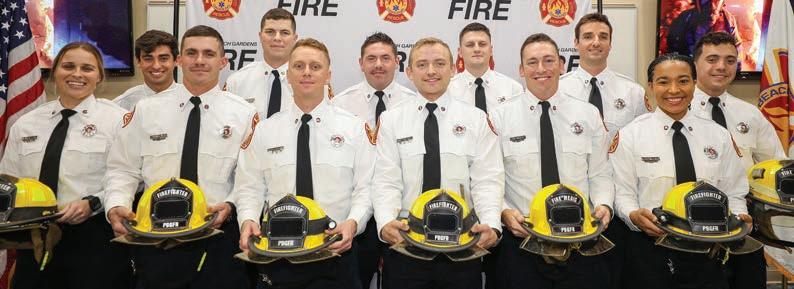
ByCory J. Bessette, Assistant Chief/PIO/Operations
Palm Beach Gardens Fire Rescue recently held two Orange to Black ceremonies for 20 of their probationary firefighters, marking a significant milestone in their careers. During each of the traditional ceremonies, the firefighters replaced their probationary orange helmet shields with black helmet shields, identifying them as sworn, full-fledged members of the department.They concluded the ceremonies by taking their oaths of office and affirming their commitment to protecting and serving the residents and visitors of the City of Palm Beach Gardens.
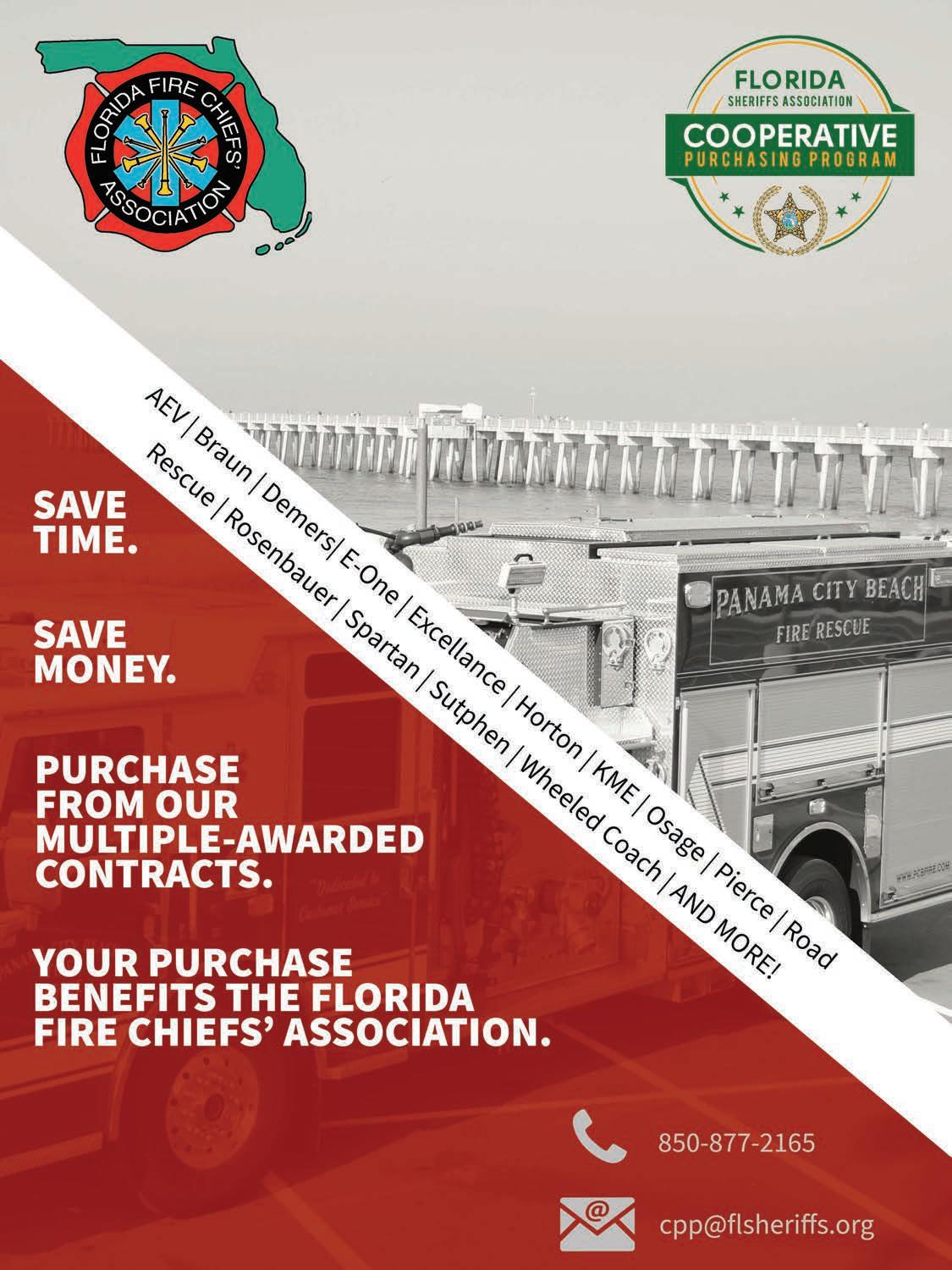

By Cary Blanchard, PhD, CFO, MiFireE, Battalion Chief
Plantation Fire Chief, Don Todd, has announced the promotion of EMS Battalion Chief Iraldo Curbelo, to the position of EMS Division Chief.
Chief Curbelo (A) started his Plantation Fire EMS career in 1996, and in 1997, he was promoted to Lieutenant. Over the next several years he received multiple Firefighter EMS certifications and served as a long time Instructor for the Plantation Firefighter Academy classes.
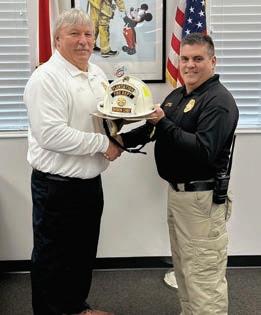

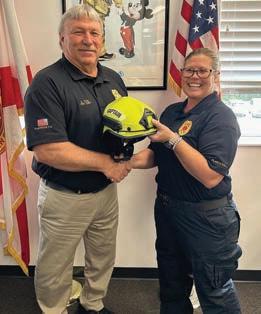
He was then promoted to Captain in 2011 and then to Battalion Chief in 2016.
Chief Curbelo wants everyone to know that as Division Chief, he is really looking forward to the final chapters in what he considers to be, “The Best Career in the World.” We thank him for his amazing career here in Plantation, and look forward to his leadership in this new role.
Captain Scott Reed has been promoted to the position of EMS Battalion Chief.
Chief Reed (B) started in the Plantation Fire Department’s Rescue Division in 1996. He was promoted to Lieutenant in 2000, and then Captain in 2016.
After many years of dedicated service to our community, Scott moves into this position bringing with him a tremendous amount of EMS experience and leadership.
We are excited to make this announcement of such a well deser ved promotion. Lt. Brandi Klink has also been promoted to the rank of EMS Captain.
In 2005, Captain Klink started at Plantation as a Paramedic (EMT-P). She worked very hard and developed her leadership skills on the job. In 2017, she was promoted to Lieutenant.
Captain Klink (C) continued her career with additional education & training. She has an Associates of Science degree in Emergency Medical Services. She also holds a Firefighter II & Fire Officer I certificate. She is an ALS/BLS Instructor, & EMS Instructor level A and B.
Please submit your article as a MS word document and include a high resolution jpeg image as an attachment (do not embed photo in document). Try to keep submissions under 300 words if possible. E-mail files and pics to: magazine@ffca.org. If you have an interesting topic that would be informative or entertaining to other departments - feel free to write a feature article for this magazine, we welcome all your submissions!All articles must have a title or headline and a byline as part of the article (pleas
By Mackenzie McClintock, Public Information Officer
Two probationary firefighters were officially pinned as career members of the South Walton Fire District on May 31, 2024.

While surrounded by their friends, family, crew members, and loved ones, Firefighter/EMT Gage Reed and Firefighter/Paramedic Conner Fears read their oath of service and received their new helmet shields signifying their career status.
Throughout the past year, Reed and Fears have worked through hundreds of hours of training and grown tremendously as young firefighters.
Thanks in part to the support of their family and leadership from their senior firefighters, they successfully passed all necessary requirements to complete their probationary period at SWFD.
On behalf of everyone at SWFD, congratulations to Gage and Conner. We can’t wait to see what you accomplish next!
By Gregory G. Sutton, Battalion Chief of Administration

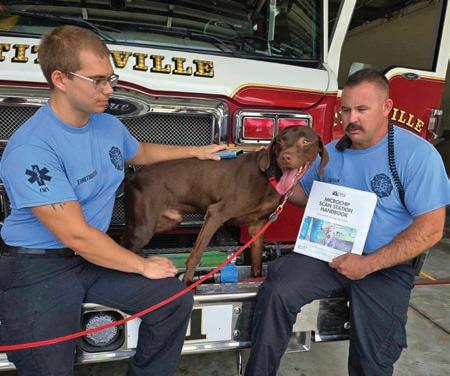
Titusville Fire Department is thrilled to announce an amazing new program that will make reuniting lost pets with their families easier and more accessible! Thanks to the generous donations from our community, the SPCA of Brevard was able to provide microchip scanners to all four of our fire stations. These scanners are available for use after hours, when the SPCA, Brevard County Animal Services, or veterinar y offices may be closed. This means patrons who find a lost pet, don’t have to wait until the next business day to act. Instead, they can visit one of these convenient locations to check for a microchip and start the process of reuniting the pet with its family immediately. Each scanner station is equipped with ahandbook that provides step-by-step instructions on how to use the scanner and what to do after scanning, whether the pet has a microchip or not. By empowering the community with these tools, we will significantly reduce the number of pets that end up in shelters.
We’re excited to be of this new initiative to ensure every lost pet finds its way back home quickly and safely.


By Kevin Mangan, Public Information Officer
On June 7, 2024, just before 5 AM, the High Springs Fire Department witnessed a heartwarming event as firefighters sprang into action to deliver a baby girl in the station parking lot.
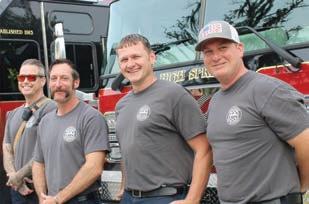
The journey of this miraculous delivery began when Mom, Dad, and their soon-to-be daughter were in route to UF Health Shands from the Live Oak area. Realizing that they wouldn’t make it in time, they swiftly dialed 911, informing operators that they were moments away from the High Springs Fire Department.
Under the command of Captain Andy Burkhalter, the crew recognized the imminent arrival of the baby and acted swiftly. FF/Paramedic Jon Friend, alongside FF/Paramedic Jake Rhoden, skillfully assisted in safely delivering the baby, who was approximately 33 weeks old, into the world. FF/EMT Clinton Drake expertly applied cord clamps, while FF/Paramedic Doug Hope aided the new father in cutting the cord. The joy and relief on the faces of the parents were palpable as they welcomed their newborn daughter.
Reflecting on the extraordinary event, FF/Paramedic Jon Friend expressed, “After the baby was born, I was speechless. It was an emotion you rarely feel with the job.” said Friend. “It’s not every day you get to deliver a baby.” Friend’s sentiment echoed that of the entire crew, who found immense fulfillment in making a positive impact on the lives of others.
By Vivian Shedd, Public Information Officer
By Mark Seiferth, Deputy Fire Chief
After six weeks of orientation, they have earned their badges! Please join us in welcoming our newest firefightersFF/EMT Braden Bowie, Tori Richarson, Marlon Rose, Dylan Post, Nick Urichko, Maximus McMichael, Nick Parish. They’ll now go on to their assigned shifts as probationary firefighters where they’ll continue to sharpen their skills through experience and training!
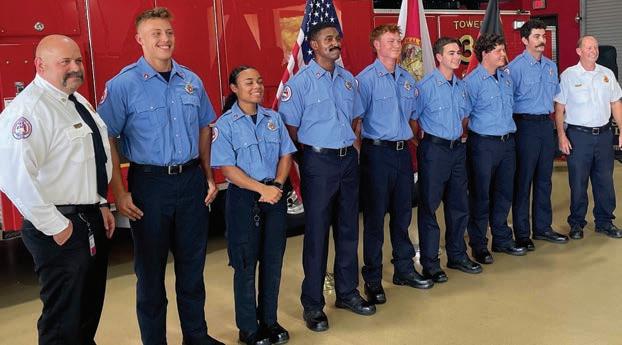
By Vivian Shedd, Public Information Officer
Tampa Fire Rescue recently hosted its second annual Hurricane Preparedness Expo, drawing a crowd eager to equip themselves with vital information and resources for the impending hurricane season. Attendees were treated to a comprehensive array of presentations and demonstrations, covering everything from assembling emergency kits to formulating effective evacuation plans. A special highlight of the event was the informative talks delivered by esteemed meteorologists Juli Marquez from Spectrum Bay News 9 and Alejandro Sosa from Telemundo 49. The collaborative efforts of vendors, the Fire Prevention Division, and the Emergency Management team ensured the event’s success, providing attendees with an informative and engaging experience. Moreover, Tampa’s Parks and Recreation played a pivotal role by distributing 1,500 sandbags to residents, enhancing the community’s preparedness against potential storm threats. As Tampa residents unite in readiness for the hurricane season ahead, the expo served as a reminder of the community’s collective strength and resilience.
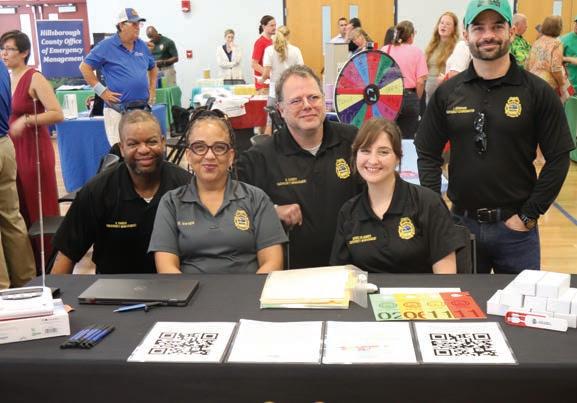
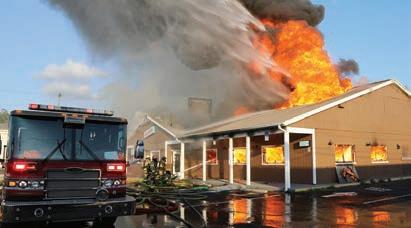
On May 29, 2024, Tampa Fire Rescue responded to a structure fire at a vacant commercial restaurant following multiple 911 calls reporting heavy smoke emanating from the building’s roof. Upon arrival, fire crews encountered a single-story commercial restaurant engulfed in heavy smoke and flames, primarily concentrated on the roof and front portion of the establishment. Despite initial attempts to enter the building, firefighters were forced to evacuate as fire conditions rapidly worsened, leading to structural concerns. As the situation escalated, a second alarm was sounded, mobilizing additional resources to the scene. Firefighters battled the blaze from the exterior, employing multiple hose lines and an aerial ladder truck to contain it. After approximately one hour of intense firefighting efforts, the fire was brought under control. Fortunately, no civilians or firefighters were reported injured during the incident.
By Joseph Dorsette, Assistant Chief of Specialized Services
The Broward Sheriff’s Office Department of Fire Rescue Hallandale Beach Fire Station 7 responded to a report of fire at a multi-family residence on Wednesday morning at approximately 0100. On arrival crews encountered a heavy body of fire and smoke coming from the front of the building. Crews quickly made entry and extinguished the fire. No one was home at the time and there were no injuries reported.

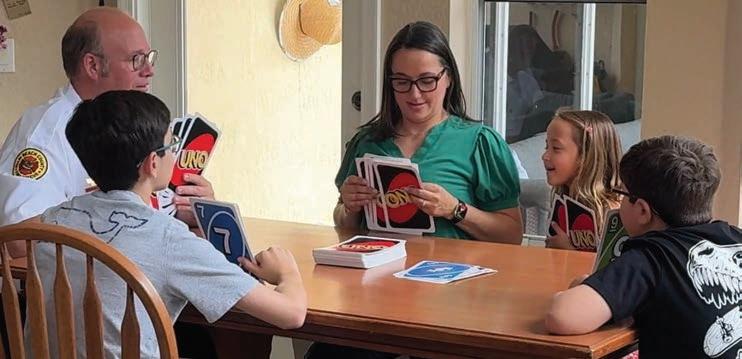
By
Six-year-old Izzy isn’t your typical prehospital blood transfusion patient, but her story is an important one for EMS providers everywhere
When Palm Beach County Fire Rescue DistrictChief Neal Niemczyk heard his wife say his daughter was bleeding, he had no idea how much blood she was talking about until he saw it for himself. six-year-old Izzy was home from the hospital after a routine tonsillectomy six days before when the blood in her throat stopped clotting. Chief Niemczyk had tried to stop the bleeding the night before with cotton balls, but the wounds hadn’t healed overnight, and by morning, little Izzy had lost a lot of blood. So much blood that she was getting woozy. Neal knew it was serious when she almost collapsed, and he caught her Izzy’s heart rate wasfast,herblood pressure dropped, and she became unresponsive right there in her father’s arms. That’s when the chief went into paramedic mode. He could not get a response from Izzy, even with a sternum rub, but she was still breathingfor the time being. Yet, he also realized he needed to act fast.The family
immediately called 911, telling the dispatcher, “She’s bleeding out.” Neal grappled with the gut-wrenching idea that he might have to do CPR on his own child. “I thought she went into cardiac arrest, and my heart sunk.” Thankfully, that was not the case, and firefighterparamedics from his own fire department were on the way Specifically, Neal knew what his daughter needed the most was in his department’s EMS vehicles - whole blood.
Palm Beach County Fire Rescue (PBCFR) was the first fire department in Palm Beach County to start carrying whole blood more than two years ago, yet no one ever expected the blood program to touch home like this. When the fire rescue crew arrived at the chief’s house, there were familiar faces, his teammates. Chief Neimczyk felt comfortable handing his baby girl over to the firefighter-paramedics for care so he could take a moment to be a dad. Then, the severity of what was happening hit him like a brick, and he found himself needing a minute. The next few moments were critical. The two EMS captains on-scene administered the blood in the back of the rescue truck right in front of
the family’s home. Within 30 seconds of the blood administration, Izzy opened her eyes and looked at her mom, who knew right then and there that her little girl would be alright. Neal breathed a massive sigh of relief, “You never suspect that we train for our own family and our own loved ones. To know that my team, my fire department, saved my daughter’s life…. how do you get any better than that?”
PBCFR’s Whole Blood program turned everything around for Izzy almost immediately. Still, it also allowed Neal’s daughter to avoid more invasive procedures at the hospital, resulting in a much faster recovery. Chief Neimczyk is so grateful to live in the area where his fire department responds, “Not every agency has the resources we have to save lives. Not every agency can do this. It’s a feat. It’s a lot of money. Implementing new protocols takes a lot of resources, time, and energy. But, here at PBCFR, we have bought into the change and all the benefits of evidence-based medicine.” Division Chief Charles Coyle, the innovator who brought whole blood to PBCFR, says, “For years, prehospital providers have not been equipped with the necessary tools to save the lives of patients suffering from hemorrhagic shock. Adding whole blood increases the patient’s chance of survivability and ensures our people have the necessary resources to truly make a difference.” At the writing of this article, PBCFR had administered more than 140 units of blood to patients before arriving in hospitals.
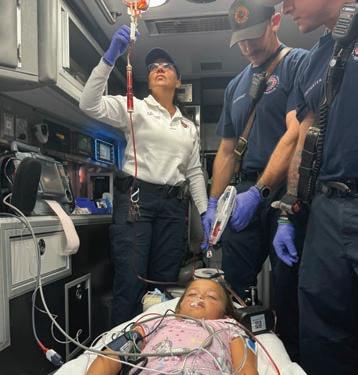
Stories like Izzy’s, along with medical professionals who are advocating for this treatment to be more widely used, caught the attention of producers at NBC Nightly News with Lester Holt.The national network prepared a special report on the life-saving value of whole blood in the pre-hospital setting, speaking with several experts and including the touching story of this fire rescue chief whose little girl is now making history.
